The basics of sailboat anatomy and terminology
Understanding the basics of sailboat anatomy and terminology is essential for anyone looking to embark on a sailing adventure, as it provides a comprehensive understanding of the various parts and components that make up a sailboat.

The Basics of Sailboat Anatomy and Terminology
Welcome to our unique and adventurous website, dedicated to those who are leaving the rat race behind, purchasing a boat, and setting sail to explore the world with their families. In this article, we will delve into the basics of sailboat anatomy and terminology, providing you with a comprehensive understanding of the various parts and components that make up a sailboat. This knowledge will not only help you become a more confident sailor but also enable you to communicate effectively with fellow sailors and sailing enthusiasts.
Table of Contents
Introduction to sailboat anatomy, hull and deck, keel and rudder, mast and rigging, cockpit and cabin, sailing terminology.
A sailboat is a complex and intricate piece of machinery, with numerous parts and components working together to harness the power of the wind and propel the boat forward. To fully appreciate and understand the art of sailing, it is essential to familiarize yourself with the basic anatomy of a sailboat and the terminology used to describe its various parts and functions.
The hull is the main body of the sailboat, providing buoyancy and stability while also protecting the boat’s occupants and equipment from the elements. The hull is typically made from materials such as fiberglass, wood, or metal, and its shape and design can vary greatly depending on the type of sailboat and its intended purpose.
The deck is the horizontal surface that covers the top of the hull, providing a platform for the crew to stand on and operate the boat. The deck is often equipped with various fittings and hardware, such as cleats, winches, and blocks, which are used to secure and control the sails and rigging.
Bow and Stern
The bow is the front end of the sailboat, while the stern is the rear end. The shape and design of the bow and stern can have a significant impact on the boat’s performance and handling characteristics. A sharp, narrow bow will cut through the water more efficiently, while a wide, flat stern will provide greater stability and buoyancy.
Port and Starboard
When facing the bow of the sailboat, the port side is the left side, and the starboard side is the right side. These terms are used to describe the location of various parts and components on the boat, as well as to give directions and instructions while sailing.
The keel is a long, narrow, and weighted fin that extends downward from the bottom of the hull. The primary purpose of the keel is to provide stability and prevent the boat from capsizing or tipping over. The keel also helps to counteract the sideways force generated by the wind on the sails, allowing the boat to move forward in a straight line.
The rudder is a flat, vertical blade that is attached to the stern of the boat and can be pivoted from side to side. The rudder is used to steer the boat by changing the direction of the water flow around the hull. When the rudder is turned to the port side, the boat will turn to the port side, and when the rudder is turned to the starboard side, the boat will turn to the starboard side.
The mast is a tall, vertical pole that supports and holds the sails and rigging. The mast is typically made from materials such as aluminum or carbon fiber and can vary in height and design depending on the type of sailboat and its intended purpose.
The rigging is the system of ropes, wires, and cables that are used to support the mast and control the sails. The rigging can be divided into two main categories: standing rigging and running rigging.
Standing Rigging
Standing rigging consists of the fixed lines and cables that support the mast and hold it in place. The main components of the standing rigging include the shrouds, which are the wires that run from the top of the mast to the sides of the hull, and the forestay and backstay, which are the wires that run from the top of the mast to the bow and stern of the boat, respectively.
Running Rigging
Running rigging consists of the movable lines and ropes that are used to control the sails and adjust their shape and position. The main components of the running rigging include the halyards, which are the ropes used to raise and lower the sails, and the sheets, which are the ropes used to control the angle of the sails relative to the wind.
The sails are the large, triangular-shaped pieces of fabric that are attached to the mast and rigging and used to catch the wind and propel the boat forward. The sails can be made from various materials, such as Dacron, Mylar, or Kevlar, and their size and shape can vary greatly depending on the type of sailboat and its intended purpose.
Mainsail and Headsail
The mainsail is the largest and most important sail on the boat, and it is attached to the mast and boom. The mainsail is responsible for generating the majority of the boat’s forward propulsion and can be adjusted and controlled using the mainsheet and traveler.
The headsail, also known as the jib or genoa, is a smaller sail that is attached to the forestay and used in conjunction with the mainsail to improve the boat’s performance and handling characteristics. The headsail can be adjusted and controlled using the jib sheets and fairleads.
The cockpit is the area at the rear of the boat where the crew can sit or stand while operating the boat and controlling the sails and rigging. The cockpit is typically equipped with various instruments and controls, such as the helm, which is used to steer the boat, and the winches and cleats, which are used to manage the running rigging.
The cabin is the enclosed living space below the deck, which can be used for sleeping, cooking, and storage. The size and layout of the cabin can vary greatly depending on the type of sailboat and its intended purpose, with some boats featuring multiple cabins, a galley, and a head (bathroom).
In addition to the basic sailboat anatomy, it is also important to familiarize yourself with some common sailing terminology, which will help you communicate effectively with fellow sailors and sailing enthusiasts.
- Tacking : The process of changing the boat’s direction by turning the bow through the wind, causing the sails to switch sides.
- Jibing : The process of changing the boat’s direction by turning the stern through the wind, causing the sails to switch sides.
- Heeling : The leaning or tilting of the boat to one side due to the force of the wind on the sails.
- Trimming : The process of adjusting the sails and rigging to optimize the boat’s performance and balance.
- Windward : The direction from which the wind is blowing.
- Leeward : The direction toward which the wind is blowing.
Understanding the basics of sailboat anatomy and terminology is essential for anyone looking to embark on a sailing adventure. By familiarizing yourself with the various parts and components that make up a sailboat, as well as the common sailing terms and phrases, you will be better equipped to navigate the open sea and enjoy the freedom and fulfillment that comes from choosing an unconventional path and embracing the sailing lifestyle.
Opti Sailors – Can You Name all the Parts of the Boat?
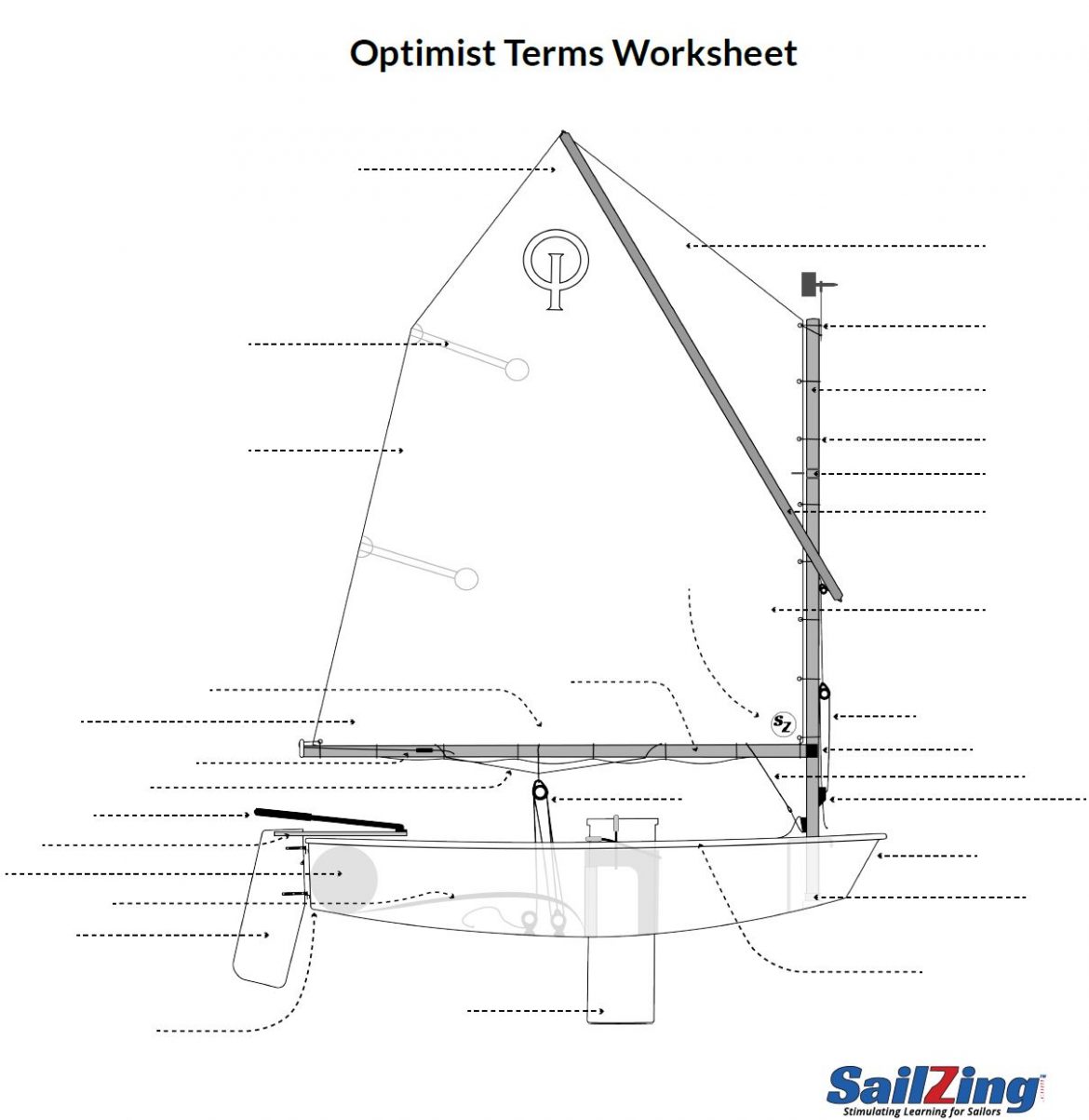
Here’s a fun activity for newer Optimist sailors. Use the worksheet to match the parts of the boat to the arrows in the drawing. This is a matching exercise – the worksheet lists the parts. Download the worksheet and answer key here.
A more hands-on version of this activity is to make cards with the parts of the boat and have the sailors place them on an actual boat. Contact us at SailZing if you would like a set of laminated cards containing the names.
We adapted this from an activity on the McLaughlin website . McLaughlin has lots of good resources for Opti sailors and their parents.
Stayed tuned for more sailing school activities from SailZing.com. Send us your ideas and we’ll publish them here.
SailZing Optimist Topic Category
Shaping Your Mainsail, Part 1: Angle of Attack
Wind flows – leeward mark rounding, you may also like, three reasons to get fit for sailing, prevent breakdowns – top tips, updated, sailing terms from l-36.com, downwind sailing and gybing tips from sarah..., upwind sailing tips by sarah ayton &..., optimist sailmakers and manufacturers tuning guides, optimist mast rake and downwind heel –..., x-boat tuning guide – go fast in..., optimist class rules link, using a line sight to give you..., leave a comment cancel reply.
You must be logged in to post a comment.
This site uses Akismet to reduce spam. Learn how your comment data is processed .
Insert/edit link
Enter the destination URL
Or link to existing content
Parts of the boat
Loading ad...
isaacquermany
Join the following words with arrows.
- Google Classroom
- Microsoft Teams
- Download PDF
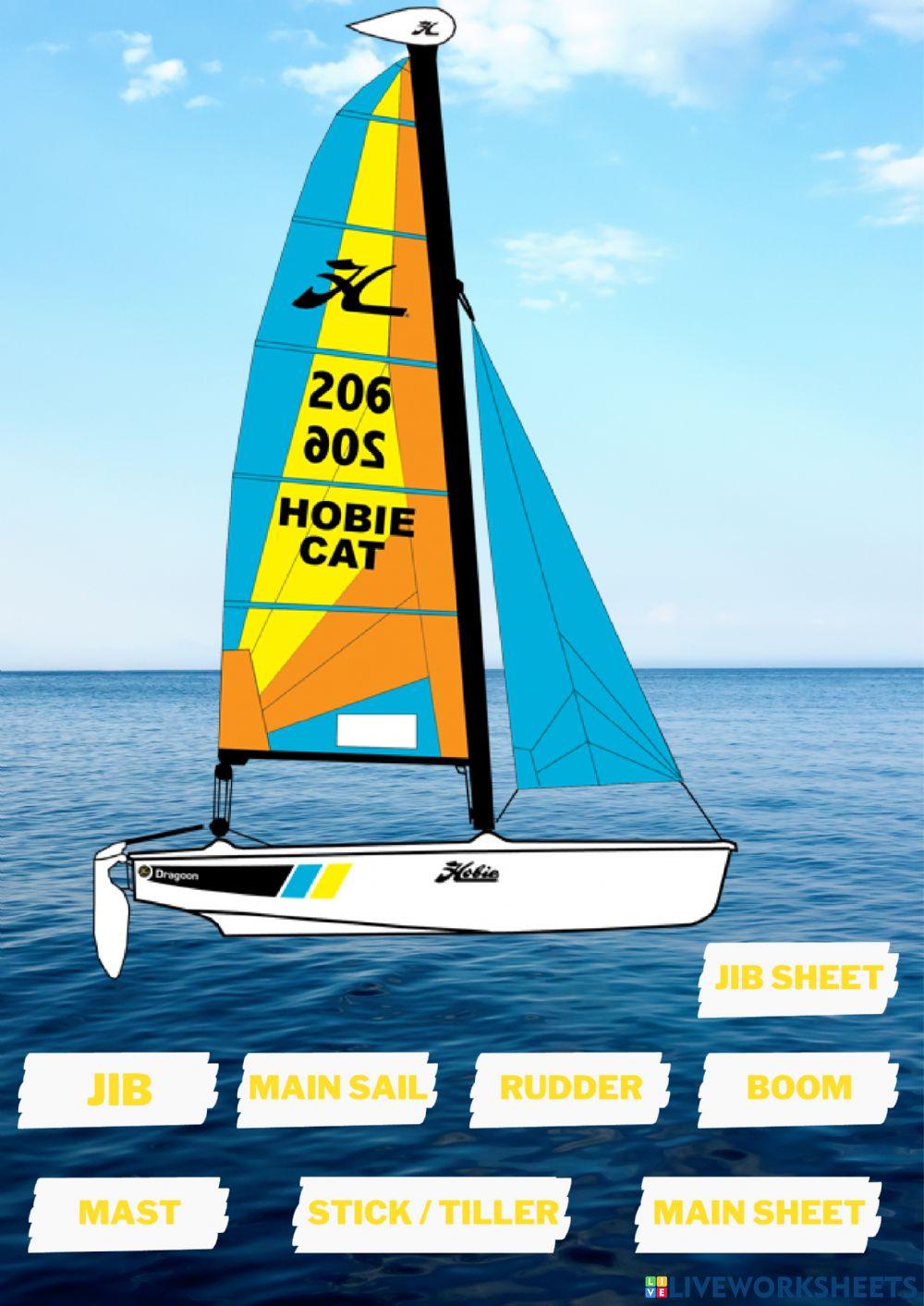
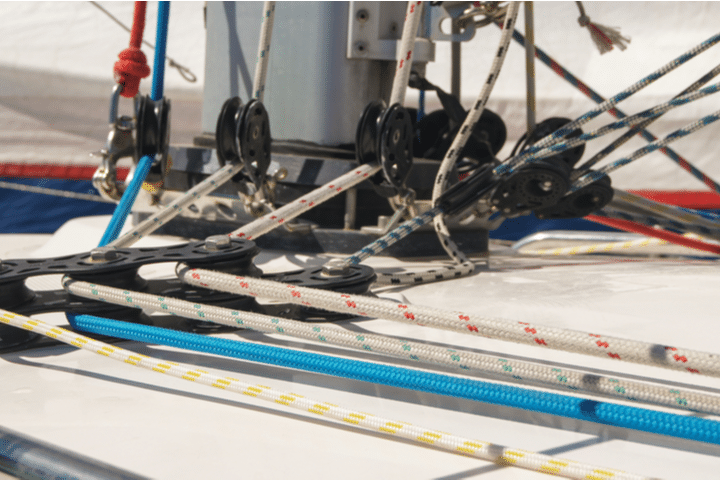
A Guide to the Different Parts of a Sailboat
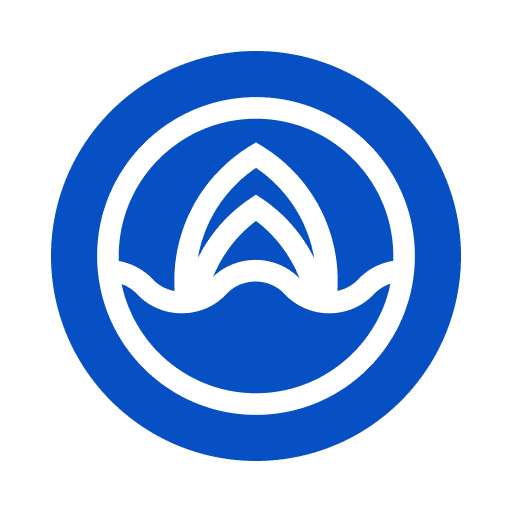
Table of Contents
When you use Boatsetter, you have the opportunity to choose from a myriad of different sailboat rentals from all over the United States and beyond . A sailboat is a perfect way to relax on the water, either on a solo adventure or on an excursion with friends and family.
When you rent a sailboat with Boatsetter, you will have the option to book a captained sailboat to enjoy your day out on the water or book bareboat to hone your sailing skills. Either way, you may be interested in the intricacies of a sailboat and its different parts. If this sounds like you, you have come to the right place. In this article, we go in-depth about the different parts of a sailboat so that you can be more knowledgeable about whatever boat you may choose and come away from reading this feeling more confident about the whole sailing experience.
A basic sailboat is composed of at least 12 parts: the hull , the keel , the rudder , the mast, the mainsail, the boom, the kicking strap (boom vang), the topping lift, the jib, the spinnaker, the genoa, the backstay, and the forestay. Read all the way through for the definition of each sailboat part and to know how they work.
Explore sailboats for rent near you or wherever you want to go
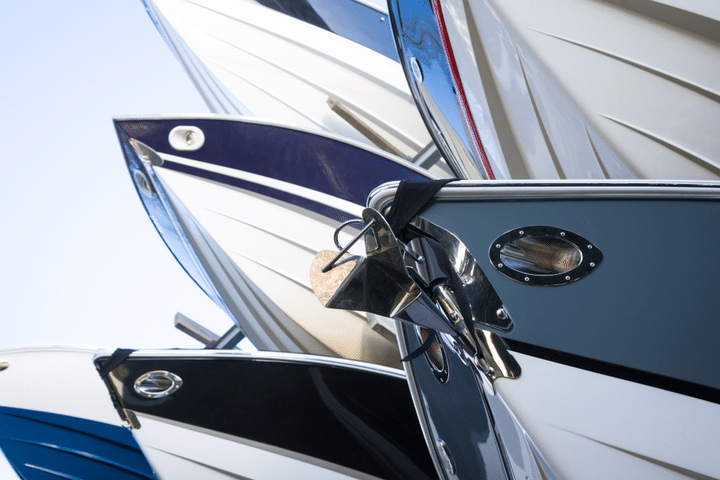
In short, the hull is the watertight body of the ship or boat. There are different types of hulls that a sailboat may have, and these different hulls will often affect the speed and stability of the boat.
Displacement Hulls
Most sailboats have displacement hulls , like round bottom hulls, which move through the water by pushing water aside and are designed to cut through the water with very little propulsion. The reason these are called displacement hulls is that if you lower the boat into the water, some of the water moves out of the way to adjust for the boat, and if you could weigh the displayed water, you would find that it equals the weight of the boat, and that weight is the boat’s displacement. One thing to know about displacement hulls is that boats with these hulls are usually limited to slower speeds.
Planing Hull
Another type of hull is a planing hull. These hulls are designed to rise and glide on top of the water when enough power is supplied. When there is not enough power behind the boat, these boats often act as displacement hulls, such as when a boat is at rest. However, they climb to the surface of the water as they begin to move faster. Unlike the round bottom displacement hulls, these planing hulls will often have flat or v-shaped bottoms. These are very common with motor-driven water vessels, such as pontoon boats, but they can also be found on smaller sailboats which allow them to glide quickly over the water.
Finally, sailboats can differ depending on the number of hulls that they have. There are three options: monohulls (one hull), catamarans (two hulls), and trimarans (three hulls).
Monohulls , which have only a single hull, will usually be the typical round bottom displacement hull or occasionally the flat bottomed or v-shaped planning hull. Catamarans have two hulls with a deck or a trampoline in between, with the extra hulls providing increased stability. Finally, trimarans have three hulls — a main hull in the middle and two side hulls used for stability. These trimarans have gained popularity because of their excellent stability and ability to go at high speeds.
When evaluating a sailboat , it is important to pay attention to the type of hull that the boat has because the type of hull a sailboat has can drastically change the sailing experience, especially when it comes to stability and speed.
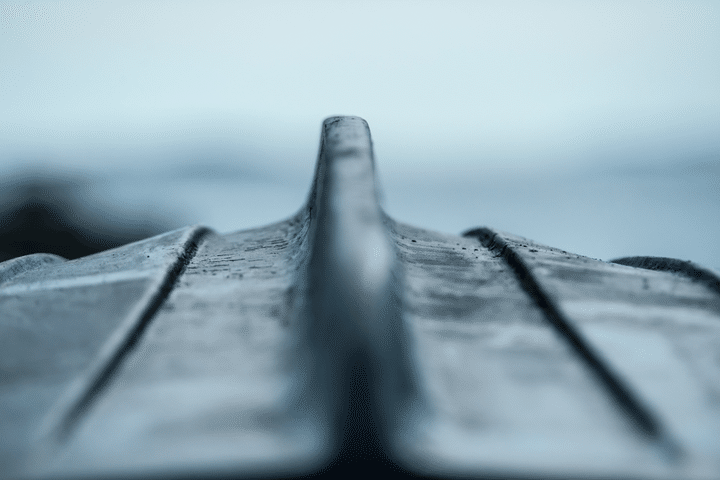
All sailboats have a keel, a flat blade sticking down into the water from the sailboat’s hull bottom. It has several functions: it provides counterbalance, life, controls sideways movement, holds the boat’s ballast , and helps prevent the boat from capsizing. When a boat leans from one side to the other, the keel and its ballast counteract the movement and prevent the boat from completely tipping over.
As with hulls, there are a number of different types of keels, though the two most common types of keels on recreational sailboats are the full keel or the fin keel. A full keel is larger than a fin keel and is much more stable. The full keel is generally half or more of the length of the sailboat. However, it is much slower than the fin keel. A fin keel, which is smaller than the full keel, offers less water resistance and therefore affords higher speeds.
A more recent feature on sailboats is the “winged keel,” which is short and shallow but carries a lot of weight in two “wings” that run sideways from the keel’s main part. Another more recent invention in sailing is the concept of the canting keels, which are designed to move the weight at the bottom of the sailboat to the upwind side. This invention allows the boat to carry more sails.
The Rudder
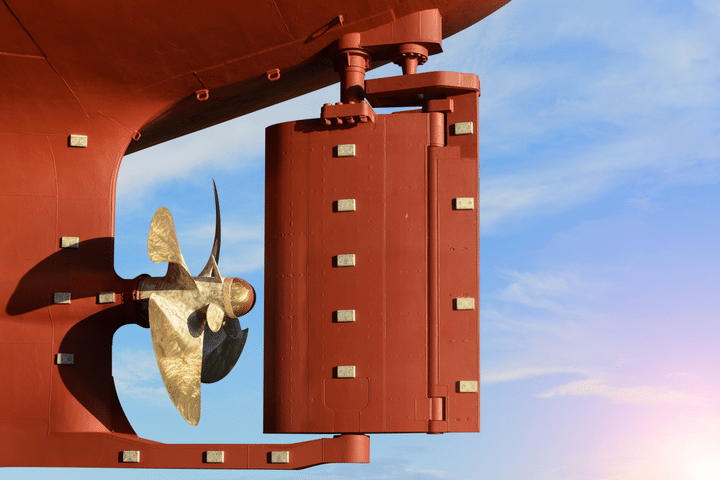
A rudder is the primary control surface used to steer a sailboat. A rudder is a vertical blade that is either attached to the flat surface of the boat’s stern (the back of the boat) or under the boat. The rudder works by deflecting water flow. When the person steering the boat turns the rudder, the water strikes it with increased force on one side and decreased force on the other, turning the boat in the direction of lower pressure.
On most smaller sailboats, the helmsman — the person steering the boat — uses a “ tiller ” to turn the rudder. The “tiller” is a stick made of wood or some type of metal attached to the top of the rudder. However, larger boats will generally use a wheel to steer the rudder since it provides greater leverage for turning the rudder, necessary for larger boats’ weight and water resistance.
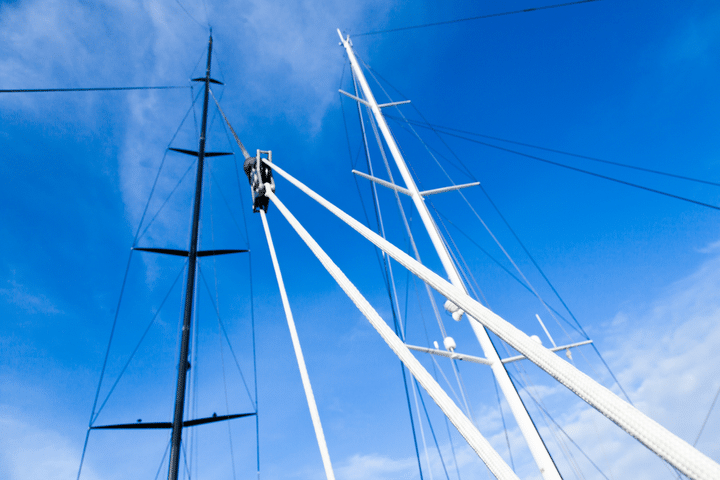
The mast of a sailboat is a tall vertical pole that supports the sails. Larger ships often have multiple masts. The different types of masts are as follows:
(1) The Foremast — This is the first mast near the bow (front) of the boat, and it is the mast that is before the mainmast.
(2) The Mainmast — This is the tallest mast, usually located near the ship’s center.
(3) The Mizzen mast — This is the third mast closest to the stern (back), immediately in the back of the mainmast. It is always shorter than the mainmast and is typically shorter than the foremast.
The Main Sail
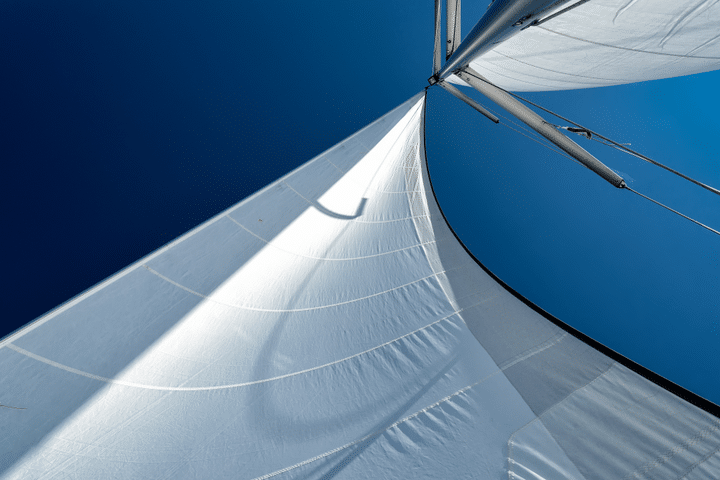
The mainsail is the principal sail on a sailboat, and it is set on the backside of the mainmast. It is the main source that propels the boat windward.
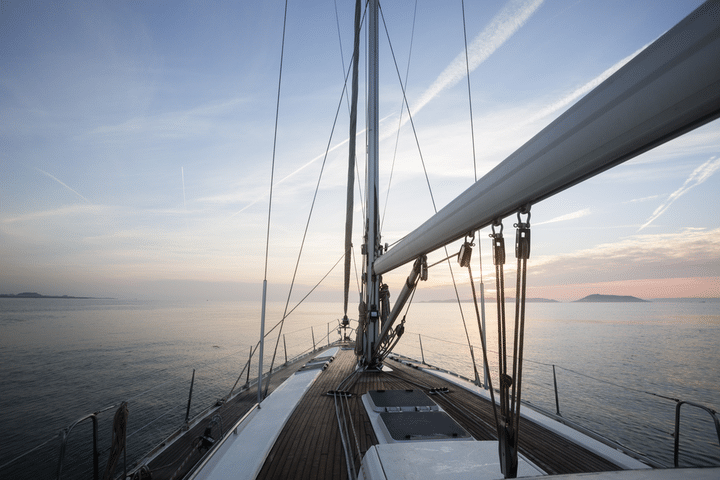
A boom is a spar (a pole made of wood or some other type of lightweight metal) along the bottom of a fore-and-aft rigged sail, which greatly improves the control of the angle and the shape of the sail, making it an indispensable tool for the navigation of the boat by controlling the sailes. The boom’s primary action is to keep the foot (bottom) of the sail flatter when the sail angle is away from the centerline of the sailboat.
The Kicking Strap (Boom Vang)
The boom vang is the line or piston system on a sailboat used to exert a downward force on the boom, enabling one to control the sail’s shape. The vang typically runs from the base of the mast to a point about a third of the way out the boom. It holds the boom down, enabling it to flatten the mainsail.
The Topping Lift
The topping lift is a line that is a part of the rigging on a sailboat, which applies an upward force on a spar (a pole) or a boom. Topping lifts are also used to hold a boom up when it’s sail is lowered. This line runs from the free end of the boom forward to the top of the mast. The line may run over a block at the top of the mast and down the deck to allow it to be adjusted.
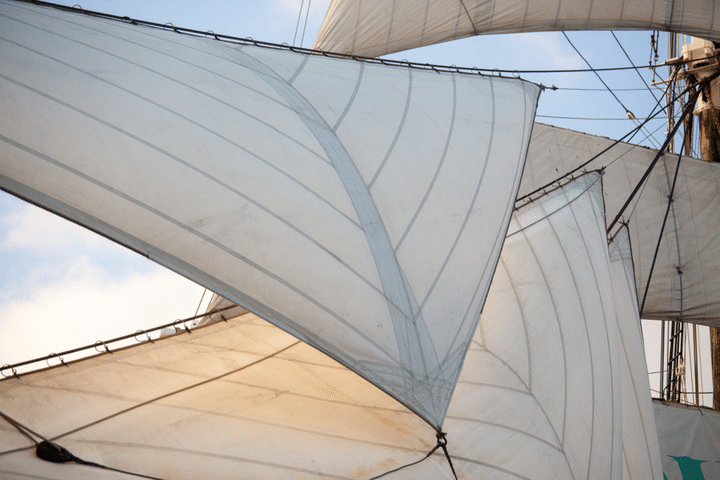
A jib is a triangular staysail set ahead of the foremost mast of a sailboat. Its tack is fixed to the bowsprit, the bow, or the deck between the bowsprit and the foremost mast. Jibs and spinnakers are the two main types of headsails on modern boats.
The Spinnaker
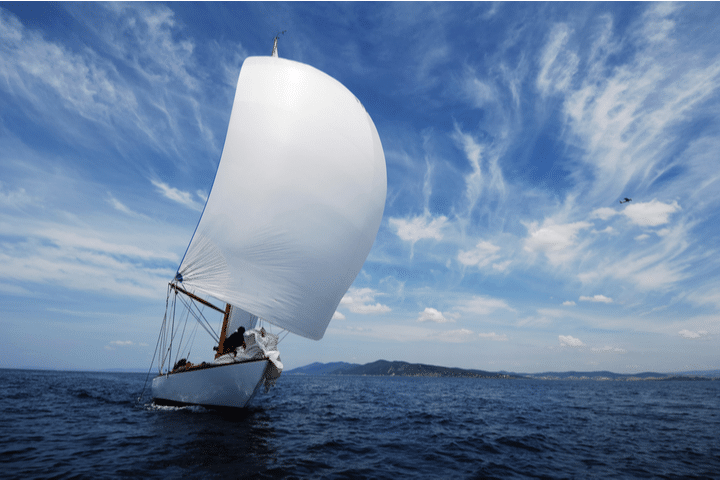
A spinnaker is a type of sail designed specifically for sailing off the wind from a reaching downwind course. The spinnaker fills up with wind and balloons out in front of the sailboat when it is deployed. This maneuver is called “flying.” The spinnaker is constructed of very lightweight material, such a nylon fabric and on many sailing vessels, it is very brightly colored.
Another name for the spinnaker is the “chute” because it often resembles a parachute, both in the material it is constructed from and its appearance when it is full of wind.
People often use the term genoa and jib as if they were the same thing, but there is a marked difference between these two types of sails. A job is no larger than a foretriangle, the triangular area formed by the mast, the deck or bowsprit, and the forestay. On the other hand, a genoa is larger than the jib, with part of the sail going past the mast and overlapping the mainsail. These two sails, however, serve very similar purposes.
The Backstay
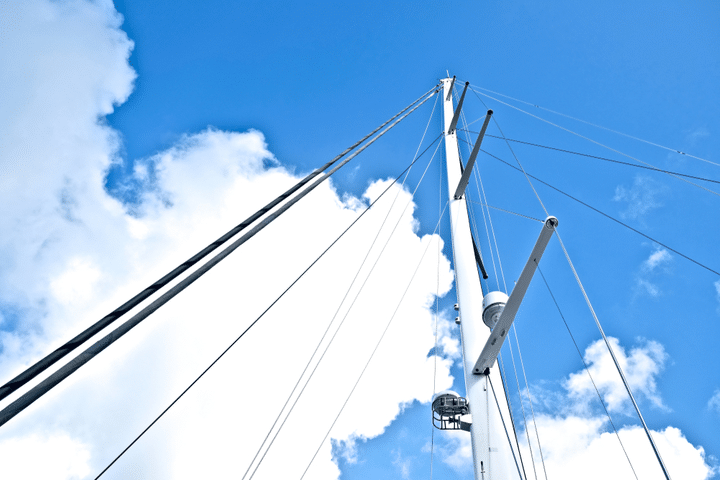
The backstay is a standing rigging that runs from the mast to the transom (the vertical section at the back of the boat), counteracting the forestay and the jib. The backstay is an important sail trip, control and directly affects the mainsail’s shape and the headsail.
There are two general categories of backstays:
1) A permanent backstay is attached to the top of the mast and may or may not be readily adjustable.
2) A running backstay is attached about two-thirds up the mast and sometimes at multiple locations along the mast. Most modern sailboats will have a permanent backstay, and some will have permanent backstays combined with a running backstay.
The Forestay
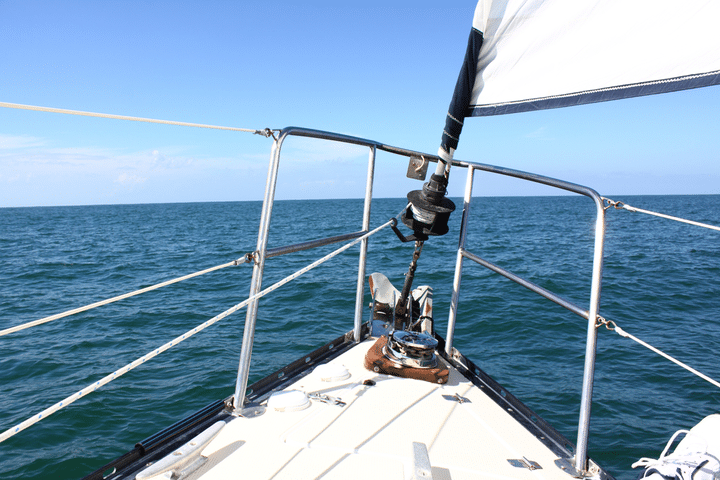
A forestay is a piece of standing rigging that keeps the mast from falling backward. It is attached at the very top of the mast, or at certain points near the top of the mast, with the other end of the forestay being attached to the bow (the front of the boat). Often a sail, such as a jib or a genoa, is attached to the forestay.
A forestay might be made from stainless steel wire, stainless steel rod or carbon rod, or galvanized wire or natural fibers.
Parts of a sail
Sails are vital for sailboats, made up of complex parts that improve performance and maneuverability. In this section, we’ll take a closer look at the different parts of that make up the sails.
Luff – The luff is a vertical sail part that maintains its shape and generates lift by interacting with the wind. It attaches securely with a bolt rope or luff tape for easy hoisting.
Leech – The leech controls air flow and reduces turbulence. Battens or leech lines are used to maintain shape and prevent fluttering.
Foot – The foot of a sail connects the luff and leech at the bottom edge. It helps define the sail’s shape and area. The outhaul is used to adjust its tension and shape.
Head – The sail’s head is where the luff and leech meet. It has a reinforced section for attaching the halyard to raise the sail.
Battens -The b attens are placed horizontally in sail pockets to maintain shape and optimize performance in varying wind conditions. They provide structural support from luff to leech.
Telltales – Sailors use telltales to adjust sail trim and ensure optimal performance.
Clew – The clew is important for shaping the sail and connecting the sheet, which regulates the angle and tension, producing energy. It’s located at the lower back corner of the sail.
Sailing is a favorite pastime for millions of Americans across the country. For some, there is nothing better than gliding across the water propelled by nothing more than the natural force of the wind alone. For both experienced and non-experienced sailors alike, Boatsetter is the perfect place to get your ideal sailboat rental from the mouthwatering Florida keys to the crystal blue waters of the Caribbean .
Smaller sailing boats are perfect for a single day out on the water, either by yourself or with friends and family. In comparison, larger sailing boats and sailing yachts can allow you days of luxury on longer excursions full of adventure and luxury.
Whatever your sailing dreams are, it is always good to know, for both the experienced sailor and the novice, all about the sailboat’s different parts. In this article, we learned all about the boat’s hull, the keel, the rudder, the mast, the mainsail, the boom, the kicking strap (boom vang), the topping lift, the jib, the spinnaker, the genoa, the backstay, and the forestay, which make up the basic parts of any sailboat you might find yourself on.
About us
Boatsetter is the go-to app for boat rentals and on-water experiences. Whatever the adventure, we’ve got a boat for that—Set sail , start the party , go yachting , make your trophy catch , and hone your watersports skills! Download the Boatsetter app ( App Store | Google Play ). Make sure to follow @boatsetter on Instagram, and tag us in all your boat day pictures for the chance to be featured.
Rent. List. Share—Only at Boatsetter

Boatsetter empowers people to explore with confidence by showing them a world of possibility on the water. Rent a boat, list your boat, or become a Boatsetter captain today.
Browse by experience
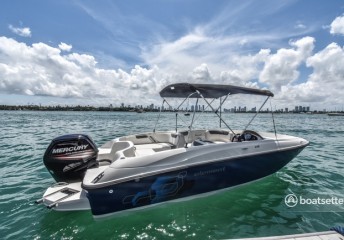
Explore articles
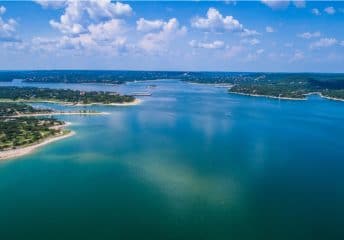
6 Best Restaurants on Lake Travis to Get to By Boat

7 Best Practices for Boaters During Spring Break
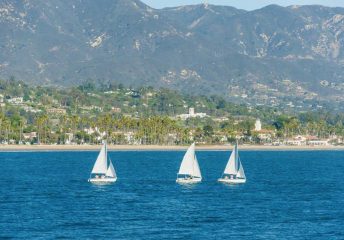
Santa Barbara Sailing and Boating Guide
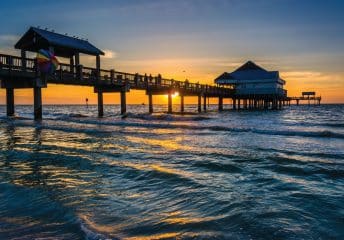
Fishing in Clearwater, FL Guide
- Types of Sailboats
- Parts of a Sailboat
- Cruising Boats
- Small Sailboats
- Design Basics
- Sailboats under 30'
- Sailboats 30'-35
- Sailboats 35'-40'
- Sailboats 40'-45'
- Sailboats 45'-50'
- Sailboats 50'-55'
- Sailboats over 55'
- Masts & Spars
- Knots, Bends & Hitches
- The 12v Energy Equation
- Electronics & Instrumentation
- Build Your Own Boat
- Buying a Used Boat
- Choosing Accessories
- Living on a Boat
- Cruising Offshore
- Sailing in the Caribbean
- Anchoring Skills
- Sailing Authors & Their Writings
- Mary's Journal
- Nautical Terms
- Cruising Sailboats for Sale
- List your Boat for Sale Here!
- Used Sailing Equipment for Sale
- Sell Your Unwanted Gear
- Sailing eBooks: Download them here!
- Your Sailboats
- Your Sailing Stories
- Your Fishing Stories
- Advertising
- What's New?
- Chartering a Sailboat
The Parts of a Sailboat (of which there are a great many!)
Some parts of a sailboat are very small and cheap, but are far from insignificant. Take the humble clevis pin for example; find one of these on the foredeck and you've cause to be concerned for the security of your rig!
If we were going to discuss all the parts of a sailboat here, it would be a very long article indeed - but relax, that's not going to happen.
Let's make a start with...
The Parts of a Sailboat Above Deck

Dacron is the usual choice of sailcloth for cruisers although laminated sails are becoming more common, and moulded sails are the first choice for racing sailors.
Read more about sails...
The Rigging
The standing rigging , generally made up in 1x19 stainless-steel wire, supports the mast.
The forestay and backstay secure the mast in the fore-and-aft plane, and the shrouds secure it athwartships.
The ends of the stays and shrouds are secured to the structural elements of the hull via chainplates.

The running rigging is the collective name for the lines (halyards, sheets, topping lifts, uphauls, downhauls etc) that control the sails. Their working ends are attached either directly to the sails or, in the case of the headsail, to the boom.
Read more about sailboat rigging...
These are the rigid struts, generally fabricated in alloy, wood or carbon fibre whose job it is to deploy the sails. For example:
- The spinnaker pole;
- The whisker pole;
- The bowsprit;
- The boomkin.
Read more about sailboat masts...
The Cockpit

Like many cruising boats, the Ted Brewer designed Whitby 42 ketch pictured above has a centre-cockpit, which allows for the provision of a sumptuous aft-cabin below. Nevertheless, aft-cockpit boats have a great following with seasoned cruisers too. So what the aft versus centre-cockpit pro's and con's?
Tillers and Wheels
Smaller boats tend to be tiller-steered while larger ones, as in the image above, have wheels. Tillers are attached directly to the rudder stock; wheels are located remotely and operate the tiller through chain or hydraulic linkage.
Each approach has their devotees, but what are the arguments for and against?
The Parts of a Sailboat Below the Waterline
Keels & rudders.

Keels provide three key attributes in varying amounts depending on their design : directional stability, ballast, and lift to windward.
Rudders provide steerage and a small contribution towards lift to windward. They are either:
- Outboard or inboard rudders, which can be
- Unbalanced, balanced or semi-balanced, and be
- Keel-hung, skeg-hung, transom-hung or spade rudders.
Rudder types are discussed here...

Driven by the boat's diesel engine, the propeller allows good progress to be made when the wind is not cooperating.
Under sail though the propeller is redundant and the fixed blades provide nothing but unwanted drag. This is greatly reduced if the blades can fold aft in a clamshell arrangement or feather in self-alignment with the water flow.
Sailboat propellers are either 2 or 3-bladed - and you can read more about them here...
Below Decks

There's no 'standard' layout for the below-decks accommodation on a sailboat, although the one shown above is a popular choice.
Some layouts work well for offshore sailing whereas others are much less suitable - here's why some succeed where others fail...
Recent Articles
'Natalya', a Jeanneau Sun Odyssey 54DS for Sale
Mar 17, 24 04:07 PM
'Wahoo', a Hunter Passage 42 for Sale
Mar 17, 24 08:13 AM
Used Sailing Equipment For Sale
Feb 28, 24 05:58 AM
Here's where to:
- Find Used Sailboats for Sale...
- Find Used Sailing Gear for Sale...
- List your Sailboat for Sale...
- List your Used Sailing Gear...
- Sign-up for our newsletter, 'The Sailboat Cruiser' ...
- Identify this month's Mystery Boat...
Our eBooks...

A few of our Most Popular Pages...

Copyright © 2024 Dick McClary Sailboat-Cruising.com
Parts of a sailboat
There is a printable worksheet available for download here so you can take the quiz with pen and paper.
The scorecard of a champion
100% needed
Other Games of Interest

Latest Quiz Activities
- An unregistered player played the game 1 day ago
- An unregistered player played the game 1 week ago
- An unregistered player played the game 2 weeks ago
- An unregistered player played the game 3 weeks ago
Parts of a sailboat — Quiz Information
This is an online quiz called Parts of a sailboat
You can use it as Parts of a sailboat practice, completely free to play.


Understanding the Parts of a Sailboat: A Comprehensive Guide to Sailboat Anatomy in 2023
- June 10, 2023

Sailboats are fascinating vessels that rely on the power of the wind to navigate the open waters. Understanding the parts of a sailboat are essential whether you’re a seasoned sailor or someone who’s just getting started. In this comprehensive guide, we will delve into the anatomy of a sailboat, exploring each component and its role in harnessing the wind and propelling your vessel forward. So, grab your sailing hat and let’s embark on this educational journey!
Table of Contents
Hull and keel.
The hull forms the main body of the sailboat and provides buoyancy and stability. It keeps the boat afloat and acts as a protective shell. Typically constructed from materials like fiberglass, wood, or metal, the hull’s shape and design impact the boat’s performance and seaworthiness.
Located beneath the hull, the keel is a weighted fin or centreboard that provides stability and prevents sideways drift. It counterbalances the force of the wind on the sails, helping to maintain the sailboat’s upright position and minimizing the risk of capsizing. Check out this article for further information.
The rudder is a vertically mounted flat plate or fin located at the stern (rear) of the sailboat. It is responsible for steering the boat by controlling the flow of water passing by it. Connected to the helm or tiller, the rudder allows the sailor to change the boat’s direction and navigate through the water.
Motor and Propeller
Some sailboats are equipped with an auxiliary motor for manoeuvring in tight spaces or when there is no wind. The motor propeller helps propel the boat when the sails alone are insufficient.
Deck and Cockpit
Positioned on top of the hull, the deck is a flat surface that serves as a platform for crew members to move around. It also houses various fittings and equipment.
Found in the rear portion of the deck, the cockpit is the area where the helmsman or skipper steers the sailboat. It is typically equipped with the helm, tiller, or steering wheel, as well as necessary instruments and controls.
Winches are mechanical devices used to handle and control the tension of the lines on a sailboat. They consist of a drum and a crank handle. By turning the handle, sailors can increase or decrease the tension of the lines, allowing for efficient control of the sails and the various rigging elements.
Cleats are fittings found on the deck used to secure lines and ropes. They provide a means of temporarily holding the lines in place, allowing sailors to free up their hands and focus on other tasks. Cleats come in various shapes and sizes and are essential for maintaining control and stability while sailing.
Anchor and Windlass
The anchor and windlass are essential for mooring the sailboat. The anchor secures the boat in place, while the windlass is a mechanical device used to raise and lower the anchor efficiently.
Mast, Boom, and Rigging
The mast is a tall, vertical spar located on the deck, extending upward. It provides support for the sails and enables their efficient capture of wind. Typically made of aluminium or carbon fibre, the mast plays a vital role in the boat’s stability and performance.
Connected to the mast, the boom is a horizontal spar that holds the lower edge of the mainsail. It allows for control over the sail’s position and shape, influencing the boat’s speed and maneuverability. The boom is pivotal in adjusting the angle and tension of the mainsail.
The rigging refers to the network of cables, wires, and lines that support and control the sails. This includes components such as shrouds, forestays, backstays, and halyards. Rigging plays a crucial role in maintaining the mast’s stability, tensioning the sails, and controlling their position.
Sails and Related Components
The mainsail is the largest sail on a sailboat, positioned on the mast and boom. It captures the wind’s power and generates forward propulsion. Adjusting the mainsail’s angle and tension influences the boat’s performance.
Jib and Genoa
The jib and genoa are smaller headsails located at the bow or front of the boat. They work in conjunction with the mainsail to optimize sail area and enhance manoeuvrability.
The spinnaker is a larger, lightweight sail used for downwind sailing. It is typically deployed when the wind is coming from behind the boat.
The berths are sleeping quarters on a sailboat. These are designated areas, often equipped with cushions or mattresses, where crew members can rest during extended voyages. Berths come in various sizes and configurations, ranging from single to double or bunk beds.
The head refers to the sailboat’s bathroom facilities. It typically includes a toilet, sink, and sometimes a shower. On smaller sailboats, the head may be compact and shared, while larger vessels may have multiple heads for increased convenience.
The galley is the sailboat’s kitchen area. It usually includes a stove, sink, and storage space for food and cooking utensils. Some sailboats may also feature a refrigerator or icebox for preserving perishable items during longer journeys.
The saloon is the main living area of the sailboat. It often serves as a multipurpose space, combining seating, dining, and socializing. The saloon may feature a table, seating benches or settees, and storage compartments for personal belongings.
Navigation Station
The navigation station is a dedicated area on the sailboat where navigational equipment, such as charts, compasses, and GPS systems, are kept. It serves as a central hub for planning routes, monitoring the boat’s position, and communicating with other vessels or shore stations.
Understanding the different parts of a sailboat is fundamental to becoming a proficient sailor. By familiarizing yourself with the anatomy of your vessel, you gain the knowledge and confidence to navigate the open waters with skill and precision. From the hull and deck to the mast, sails, and rigging, each component plays a crucial role in harnessing the wind’s power and propelling your sailboat on unforgettable adventures. So, keep learning, keep exploring, and may fair winds always fill your sails!
Related Posts

Exploring the Different Types of Sailboats and Their Versatile Uses
- May 20, 2023

Keelboat Sailing 101: A Beginner’s Guide to Navigating the Seas with Stability

Yacht Sailing 101: A Beginner’s Guide to Embarking on Luxurious Adventures

Parts of a Sailboat: The Definitive Guide
Sailing is a sport that has a lot of terms that may sound like a foreign language. Port, Starboard, beam, stern, bow, etc. Some of these terms, you might have heard of before, but many of them will be new to you.

Below Are Some Of The Most Basic Parts Of A Sailboat:
Below I have discussed some most basic parts of a sailboat that are found common in almost all kinds of sailboats.
Port side – This is the left side of the boat when viewed from the back of the boat looking forward.
Starboard side – This is the right side of the boat when viewed from the back of the boat looking forward.
Stern – This is the rear of the boat.
Bow – This is the front of the boat.
Beam – This is the widest point of the boat.
LOA – Length Overall – Length of the boat at its longest point. Most of the time, the boat is longer above the water than it is at the waterline and below.
Cockpit – This is the part of the boat where the crew sits when riding in the boat. This is usually in the rear of the boat but could be in the center, depending on the style of the boat.
Rudder – Located below the waterline and connected to the stern of the boat, this is used to make the boat turn. It is connected to either a steering wheel or a tiller. When the rudder is turned from side to side, it changes the angle that the water flows under the boat. This change in the direction of the water flow is what makes the boat turn.
Tiller – This is usually a wooden lever or arm that is connected to the rudder and allows you to turn the boat.

Helm – This is the area of the boat where the person who is piloting the boat is either sitting or standing.
Helmsman – The person that is piloting the boat and at the helm.
Steering wheel – This is connected to the rudder via cables or pulleys and is used in place of a tiller to steer the boat.
Hull – This is the entire body of the boat.
Deck – This is the flat surface on the top of the boat.
Keel – This is a fin connected to the bottom of the sailboat. The keel is weighted and provides a counterbalance to the sail and the wind blowing against the sail. Without this keel, the boat would tip over when the wind blew against it. The keel comes in many shapes and sizes and does several other important things to allow you to sail better, these will be covered in other posts.
Bow Pulpit – This is the metal tubing that surrounds the bow (front) of the boat.
Stern Pulpit – The metal tubing that surrounds the stern (rear) of the boat.
Lifeline – A wire cable running from the bow pulpit to the stern pulpit and connected to the deck in several different locations. This is a safety feature designed to keep people from falling off the deck of a sailboat.
Stanchions – Two-foot tall metal tubing that is used to connect the lifeline to the deck.
Some Specific Parts of a Sailboat
For this next part, I am going to talk about what is above the deck, the rigging. The rig includes the sails, the supporting cables, and everything that controls all of this. These are the parts of a sailboat that make it a sailboat and not just a mere boat.
Everything we went over, prior to this, had fairly normal, easy-to-remember names. Now we are going to learn about some more complicated sounding parts of a sailboat. Even though the names are complicated, it is stuff that you will use every time you sail, so it will be easy to remember. Ready? Great, let’s learn more!

Mast – This is the main part of the sailboat that makes it look like a sailboat and also pretty much everything else is attached to it.
Boom – The horizontal beam that extends out from the mast towards the stern (rear) of the boat.
Standing Rigging – In order for the mast and the boom to remain upright, something has to hold it up. This is what the standing rigging does. Many of the cables that you see on a sailboat are only there to help hold the mast up.
Shrouds – These are the cables that run down the port (left) and starboard (right) side of the mast. These keep the mast from falling to the left or right. They are attached to the deck on the sides of the boat. Sometimes there are upper and lower shrouds, depending on the height of the mast.
Spreaders – These are attached to the mast about halfway down and push the shrouds out further than they would be if they were attached straight down to the deck. This provides a more effective angle of support for the shroud.
Chainplates – These are plates on the deck that provide a great anchor for the shrouds, and stays, to attach too. Without these, it would be hard to attach a cable to the deck and it not get ripped out.
Backstay – This is a wire cable that runs from the top of the mast to the stern (rear) of the boat. This keeps the mast from falling forward.
Forestay (aka Headstay) – This is a wire cable that runs from the top of the mast to the bow (front) of the boat. This keeps the mast from falling backward.

Mainsail – This is the large sail that is attached to the mast and the boom. This sail is usually the first sail raised and does the majority of the work when sailing.
Batten – These are either plastic, wood, or possibly fiberglass. They are inserted into pockets on the mainsail and are used to help shape the sail. We will discuss why the shape of the sail is important in another post.
Jib – This is a sail that is attached to the forestay (head stay). There are many different sizes of sails that can go on this forestay, depending on the type of sailing being done or the weather. This sail is a very important sail and is used almost as much as the mainsail.
Roller Furling Drum – This is a tube that fits over the forestay and one end of the jib is inserted inside it. This gives the sailor the ability to roll up the jib and wrap it around the forestay for storage. This is the easiest way to store the job when not in use. Some newer masts are actually using a similar system for the mainsail, but that is only for the newer boats.
Gooseneck – This is a turnbuckle that attaches the boom to the mast. The boom is not attached in a fixed manner, it uses this buckle to allow it to move around and be somewhat flexible. The problem with this is that it also allows the boom to be pulled up when the sail is full.
Boom Vang – This is a series of pulleys and ropes that are used to hold the boom down when the sail is full. This helps the gooseneck be flexible without allowing the boom to just fold up.
Boom Topping Lift – This is a wire cable that runs from the top of the mast all the way down the mainsail to the boom. It attaches to the end of the boom and keeps the boom from falling down. So the Boom Vang keeps the boom from going up and the Topping Lift keeps the boom from falling down.
Now you know a lot more about the rigging used on a sailboat. You can see that these terms are strange for a novice sailor to learn, but trust me, you get used to them, it just takes practice. There are more parts, but I want to go over those parts in more detail in other posts.
I know I was overloaded when I first went to training and wished I had spent more time learning these terms. Sailing class is much more fun when you can learn to sail and not have to worry about what they are talking about!
Do you have more to add about the parts of a sailboat or do you have a question about this post? Please leave a comment and make this post even better and more educational.
Related Posts

Nevertheless it was not until 2008 that the group received approval to refurbish and develop the resort. Greta Horst Boynton
Save my name, email, and website in this browser for the next time I comment.
Sailboat Parts: A Comprehensive Guide for All Sailors
by Emma Sullivan | Jul 17, 2023 | Sailboat Gear and Equipment
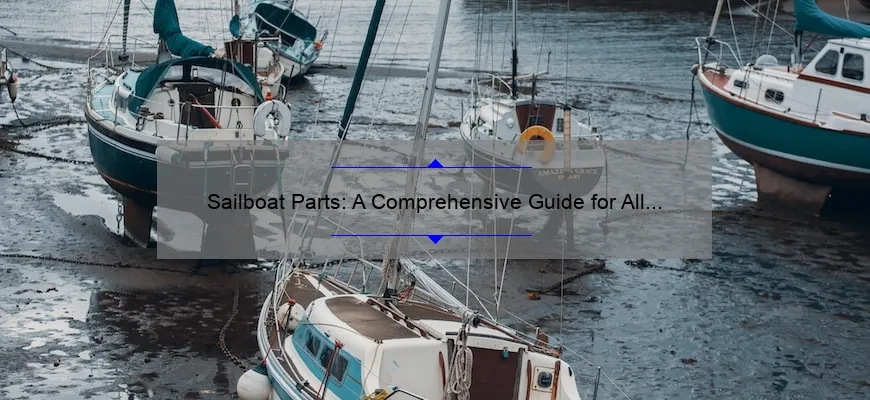
Short answer sailboat parts:
Sailboat parts refer to the components and equipment that make up a sailboat. Common examples include the mast, boom, sails, rigging, winches, rudder, and keel. These parts are essential for navigation and control of the vessel while under sail.
Understanding Sailboat Parts: A Comprehensive Guide
Are you ready to set sail and embark on a thrilling adventure? Before hoisting the sails, it is crucial to have a deep understanding of the different parts that make up a sailboat. Whether you are a seasoned sailor or a novice looking to learn, this comprehensive guide will equip you with the knowledge you need to master your vessel.
1. The Hull: The Backbone of Your Vessel
Imagine the hull as the skeleton of your sailboat. It is the bottommost part that forms its structure and remains in contact with water. Typically made from sturdy materials such as fiberglass or wood, its primary purpose is to provide buoyancy while also offering stability in calm or rough seas. The shape and design of the hull greatly affect how your boat moves through the water.
2. Sails: Harnessing Nature’s Power
What sets apart sailboats from other watercraft is their ability to capture wind energy using sails. These magnificent pieces of fabric catch gusts of wind, propelling your vessel forward elegantly and efficiently. Each type of sail has its purpose – mainsails are typically large and positioned near the back (aft) of the boat for propulsion, whereas jibs and genoas are smaller triangular-shaped sails located toward the front (foredeck). As winds change, experienced sailors skillfully adjust their sails’ angles and tensions to optimize speed.
3. Mast: Raising Sails Toward Great Heights
The mast is like a skyscraper rising high above deck level carrying your sails aloft. Usually made from aluminum or carbon fiber, this tall vertical pole supports multiple sailing functions by providing stability and height advantage for capturing favorable wind conditions.
4. Rigging: Taming Wind Power
Rigging consists of all supporting structures holding up your mast and distributing forces generated by winds throughout your sailboat’s body. Rigging includes shrouds (cables securing the mast laterally), forestays (cables holding the mast forwards), and cables attaching the mast to various points on deck. It is essential to inspect and maintain rigging regularly to ensure it remains safe and reliable, as its integrity greatly affects your overall sailing experience.
5. Rudder: Steering Your Course
The rudder acts as a sailboat’s steering mechanism, enabling you to direct your vessel’s course. Positioned at the stern, beneath the waterline, this vertical fin-like structure uses hydrodynamics to control your sailboat’s direction by altering water flow. Connected to a tiller or wheel in the cockpit, skilled sailors adeptly maneuver their rudders through even the trickiest of navigational challenges.
6. Keel: Keeping You Upright
One of the most critical components, especially when encountering strong winds or choppy waters, is the keel. Situated beneath the hull, it serves two primary purposes: stability and preventing sideways drifting (known as leeway). Keels come in various types – from fixed keels providing consistent stability to retractable keels allowing you access into shallower waters.
7. Winches: Powering Through Challenges
To control your sails effectively, harnessing wind power requires mechanical assistance – enter winches! These drum-shaped devices fitted with handles allow sailors to easily adjust tension on lines connected to sails or other parts like jibs or genoas. By using leverage effectively, winches empower sailors with precision control over their vessel’s performance.
8. Navigation Instruments: Navigating Treacherous Waters
In an ever-connected world driven by technology, navigation instruments have become all-encompassing tools for experienced sailors. From GPS systems that provide accurate positioning information to depth sounders ensuring you don’t run aground in shallow waters – these instruments work together harmoniously for safer and more precise voyages.
Now armed with this comprehensive guide on understanding sailboat parts, you are ready to navigate like a seasoned sailor, harnessing the power of the wind and embarking on exciting adventures. So, hoist your sails high, trim them carefully, and set forth on voyages that will reward you with exhilaration and memories for a lifetime!
How Sailboat Parts Work: A Step-by-Step Breakdown
Have you ever wondered how a sailboat glides gracefully through the water, propelled only by the wind? It’s not as simple as just raising a sail and hoping for the best. Sailboats are intricate vessels that require a deep understanding of their various parts and how they work together to achieve optimal performance. In this blog post, we will take you on a step-by-step breakdown of sailboat parts, shedding light on the fascinating mechanics that make a sailboat soar.
First and foremost, let’s start with the most essential part of any sailboat: the sails. These large pieces of fabric catch the wind and convert its force into forward motion. Sails come in different shapes and sizes to suit varying conditions and goals. From sturdy mainsails to versatile jibs and spinnakers built for speed, every sail plays an important role in harnessing the power of nature.
Next, we move onto one of the most recognizable components – the mast. The mast is a vertical structure that serves as the backbone of the sailboat, holding up its sails while also supporting other crucial elements. Masts can be made from various materials such as wood or aluminum and are designed to be strong yet lightweight. They vary in height depending on the size of the boat but always protrude above deck level to capture maximum wind energy.
Connected to the mast are several rigging lines which control how the sails interact with wind flow. These lines include halyards, sheets, vangs, clew outhauls; each playing an indispensable role in fine-tuning sail shape and position for optimal efficiency.
Now let’s move down below deck where we find another vital component –the keel or centerboard. The keel provides stability by counteracting lateral forces created by wind pressure against sails. Fixed keels extend directly from under hulls while centerboards can be raised or lowered accordingly for better maneuverability depending on conditions – like retractable fins beneath the belly of a sleek dolphin.
Another key element can be found at the stern – the rudder. The rudder is like a sailboat’s steering wheel, allowing sailors to determine the direction in which they wish to travel. Connected to the helm, this maneuverable device pivots in response to the sailor’s commands and controls the yaw or side-to-side movement of the boat. Cleverly angled, it works in harmony with wind propulsion, guiding your vessel across waves with precision and finesse.
In addition to these primary features, there are various other parts that contribute to a sailboat’s functionality such as winches, blocks, and cleats. These devices help control tension on lines and facilitate adjustments when necessary. Winches allow for increased mechanical advantage when cranking sheets or halyards while cleats secure lines in place under tension. Blocks redirect line paths for optimal efficiency based on sail trim requirements – think of them as miniature pulley systems facilitating fluid motion across various rigging points.
Now that we have walked you through some key sailboat parts let’s briefly touch upon how all these components seamlessly work together. It starts with strategically positioning sails through trimming; this influences both speed and angle at which you traverse water. By adjusting different aspects like sheets’ tension or amounts of canvas exposed to gusts, sailors achieve desired dynamics – zipping upwind or navigating downwind with elegance.
Furthermore, altering angles at which sails capture wind energy can induce desirable effects like heeling actions caused by utilizing relative forces against keels or centerboards as counterweights for righting moments; thus increasing stability during maneuvers including tacking (turning into wind) and jibing (gybing) – sailing lingo for turning away from wind flow.
And voila! We have taken you through a detailed breakdown of how sailboat parts work together harmoniously like pieces of an intricate puzzle adorned by nature’s breath. Understanding the mechanics behind a sailboat not only fosters appreciation for its beauty but unlocks possibilities for mastering your own aquatic vessel. So next time you set sail, take a moment to marvel at the symphony of engineering and nature unfolding before your eyes. Bon voyage!
Frequently Asked Questions about Sailboat Parts, Answered
Welcome to our blog! Today, we will be diving into the frequently asked questions about sailboat parts, providing you with detailed professional answers that are sure to satisfy your curiosity. So without further ado, let’s set sail on this educational journey!
1. What are the essential sailboat parts?
Every sailboat has its own unique set of components, but some essential parts include mast and rigging (to support the sails), sails (main, jib, and spinnaker), rudder and tiller (for steering), keel or centerboard (providing stability), winches and cleats (to control lines), and navigation instruments.
2. How do I choose the right type of sails for my sailboat?
When selecting sails, it’s crucial to consider factors such as boat size, intended use (racing or cruising), prevailing wind conditions in your area, and your sailing experience level. Seek advice from experienced sailors or consult sailmakers who can recommend the most appropriate sails based on your specific needs.
3. What is the purpose of a boom vang?
The boom vang controls the shape and tension of the mainsail by limiting vertical movement of the boom. It prevents excessive twist in light winds and helps flatten out the sail when winds increase. By adjusting the boom vang appropriately, you can optimize your boat’s performance and control its responsiveness under varying wind conditions.
4. What are winches used for on a sailboat?
Winches are mechanical devices designed to ease manual handling of heavy loads associated with operating various lines on a sailboat—especially sheets used to trim sails or control halyards. By utilizing leverage through gears, winches allow sailors to generate greater pulling power effectively.
5. How does a furling system work?
A furling system enables easy deployment/retrieval of headsails by allowing them to be rolled around a stay rather than being lowered entirely. Drum-shaped furlers house the headstay, which can be rotated using a control line. This mechanism ensures quick and convenient reefing or stowing of headsails without the need to go to the foredeck.
6. What is the function of a traveler on a sailboat?
The traveler is typically a sliding car attached to a track located near the cockpit. It allows adjustment of the mainsail’s position side-to-side while sailing upwind. By relocating the traveler, you can optimize sail shape, minimize heeling (leaning), and maintain better control over your boat’s overall balance.
7. Can I upgrade my sailboat’s rigging?
Absolutely! Upgrading your sailboat’s rigging can improve both performance and safety. Modern rigging materials such as Dyneema or carbon fiber offer increased strength, reduced weight, and improved resistance to fatigue compared to traditional wire options. Consult with an experienced rigger or naval architect who can assess your specific needs and suggest suitable upgrades.
In conclusion, understanding various sailboat parts is essential for any sailor looking to enhance their knowledge and make informed decisions about their vessel. By grasping concepts like sails, rigging components, winches, boom vangs, furling systems, travelers, and potential upgrades in rigging material, you’ll feel more confident every time you step onboard your beloved sailboat. Fair winds!
Essential Sailboat Parts Every Sailor Should Know About
Sailing aboard a sailboat is an exhilarating experience that allows you to harness the power of the wind and explore the open waters. As a sailor, it is vital to have a deep understanding of the essential sailboat parts that make your vessel function smoothly and efficiently. These parts not only contribute to the overall performance but also ensure your safety on the water. In this blog post, we will delve into some key sailboat components that every sailor should be familiar with.
1. Mast and Rigging: The mast serves as the backbone of your sailboat, holding up the sails and providing crucial stability. It is usually made from aluminum or carbon fiber, offering strength without compromising weight. Connected to the mast are various rigging components like shrouds, stays, spreaders, and halyards. Understanding how these pieces work together helps maintain proper tension while adjusting sails and provides structural integrity when facing rough weather conditions.
2. Sails: The sails are undoubtedly among the most important parts of a sailboat – they capture wind energy to propel your vessel forward. Sail types vary depending on their positioning and function: mainsail (situated behind the mast), jib/genoa (forward of the mast), spinnaker (used for downwind sailing). Knowing how to trim each sail correctly by using clew lines, sheets, and halyards can significantly impact your boat’s speed and maneuverability.
3. Rudder: The rudder enables steering control by redirecting water flow as you turn in different directions. It is typically located at or near the stern (back) of a sailboat. Familiarize yourself with rudder angles while navigating through different wind conditions; understanding how it affects maneuverability will allow you to tack effectively – switching direction against the wind – or jibe – turning downwind.
4. Hull: The hull refers to the body or shell of your sailboat that floats on water. Made from fiberglass, wood, or even metal, hull shapes vary based on the boat’s purpose (cruising, racing) and sea conditions. Understanding hydrodynamics can help you optimize your sailboat’s performance by minimizing drag, increasing speed, and maximizing stability.
5. Winches: Winches are mechanical devices crucial for adjusting sails under tension. They consist of a drum around which lines (sheets/ropes) are wound to control various elements like halyards or sheets. Learning how to operate winches effectively will allow you to trim your sails efficiently and ensure better sail shape for improved performance.
6. Navigation Instruments: Navigating accurately is key to staying safe on the water, especially when venturing into unfamiliar territories or during nighttime journeys. Equip your sailboat with essential navigation instruments such as a compass, GPS receiver, and depth sounder to help determine your position relative to landmarks and avoid potential navigational hazards.
7. Safety Equipment: Lastly but most importantly – safety equipment should never be overlooked! Every sailor should have lifejackets onboard for each crew member, emergency flares/signals if stranded at sea or in distress situations along with fire extinguishers and first aid kits readily accessible at all times!
In conclusion, knowing about these essential sailboat parts will enable you to become a skilled sailor who can confidently navigate their vessel in any condition. By understanding how these components work together harmoniously while keeping safety a priority, you’ll have an enjoyable and fulfilling journey every time you set sail!
Exploring the Anatomy of Sailboats: Key Components and Their Functions
When it comes to sailing, understanding the anatomy of a sailboat is essential. Each component plays a crucial role in ensuring the vessel’s performance and maneuverability on the water. In this blog post, we will delve into the various key components of a sailboat and elaborate on their functions, from mast to keel.
Let’s start at the top with the mast, which is arguably one of the most prominent features of a sailboat. The mast serves as a vertical support structure that holds up the sails. It provides height and stability for efficient propulsion by capturing wind energy. Equipped with various attachment points for halyards (ropes used to raise or lower sails) and rigging, the mast allows sailors to adjust its position according to wind conditions.
Attached to the mast is another vital part of a sailboat – the boom. The boom connects horizontally to the bottom edge of the mainsail (the largest and most crucial sail) and acts as an extension that helps control its shape. By adjusting the boom’s position using lines called sheets, sailors can trim or ease out their mainsails for optimal efficiency based on wind direction.
Moving down towards the hull, we encounter one of a sailboat’s heaviest components – the keel. The keel serves two primary purposes: stability and preventing sideways drift (known as leeway). By extending deep underwater from beneath each boat’s hull, it counterbalances wind forces pulling sideways on sails. This counteracting force keeps the boat upright while allowing it to move forward efficiently without excessive side slippage.
Directly underneath or integrated into a boat’s keel is typically found another indispensable component- ballast or centerboard/daggerboard. These add-on options provide extra weight below waterline for increased stability in varying sailing conditions like heavy winds or rough seas.
Bringing our attention back up above deck leads us next along the lifelines – horizontal wires strung around a sailboat’s perimeter, providing a safety barrier to prevent crew from falling overboard. In addition to enhancing safety, lifelines can also act as attachment points for various accessories like harnesses, jacklines or even hanging laundry!
Further examining the structure of a sailboat, we have the rigging system composed of ropes and wires that support and control the sails’ shape and position. This complex network connects different components such as shrouds (supporting the mast sideways), stays (holding the mast fore and aft), spreaders (keeping the shrouds apart) and many other elements. Fine-tuning these tensions is vital to optimize sailing performance.
Another noteworthy component situated at the rear of a sailboat’s hull is the rudder – a vertically oriented flat plate or blade connected to a steering mechanism. The rudder acts as a directional control mechanism – when you turn it in one direction, water flow pushes against it, causing the boat to change course accordingly.
Lastly, but far from least important considering sailor comfort and ease-of-use are winches. These mechanical devices provide leverage for pulling in or letting out heavy ropes rapidly using rotational force through a handle crank system. Winches play an instrumental role in controlling various aspects of sailing functions effortlessly by reducing physical strain on sailors.
Understanding these key components helps grasp how they work together harmoniously to empower sailors with precise control over their sailboats. From manipulating wind energy captured by sails using boom and rigging adjustments to optimizing stability with keels and ballast systems, each element serves its purpose brilliantly.
So next time you step onto a sailboat or watch one gracefully slicing through waves, appreciate not only its aesthetic beauty but also all those ingenious design features cleverly blended into making every sailing adventure extraordinary!
Mastering Sailboat Maintenance: Taking Care of Your Boat’s Vital Parts
Sailing can be an immensely rewarding experience, enveloping you in a serene world of wind and waves. But behind the freedom and tranquility lies the responsibility of managing sailboat maintenance, ensuring that your vessel remains seaworthy and reliable. Just as a captain must navigate their ship through tumultuous waters, so too must they navigate the intricate world of boat maintenance.
Owning a sailboat comes with its fair share of challenges, but by mastering the art of boat maintenance, you can ensure that your vessel stays in pristine condition for years to come. In this blog post, we will delve into the vital parts of your sailboat that require regular attention, offering you professional insights while injecting a touch of wit and cleverness along the way.
1. Rigging Regimen: The Backbone of Your Sailboat The rigging system acts as the backbone of your sailboat, providing support and control for your sails. Regularly inspecting and maintaining your rigging is crucial to avoid any catastrophic failures at sea. Secure all turnbuckles tightly enough to prevent line slippage but not so tight that they strain or deform the fittings. Pay close attention to any signs of fraying or rust on wires or connectors – these are indications that replacements are needed. Remember, neglecting routine rigging inspections can lead you down a dangerous path where even pirates would fear to tread!
2. Engine Excellence: Maintaining Smooth Sailing While sailing harnesses nature’s power, having a reliable engine is essential when conditions demand it or during docking maneuvers. Keep a keen eye on fluid levels – oil, coolant, fuel – regularly changing them as per manufacturer guidelines. Checking belts for adequate tension and wearing is just as important; after all, belts hold not only engines together but also our dreams of smooth sailing! And hey sailor! Don’t forget about those propellers, making sure they are free from any corrosion and that their blades retain their sharpness to slice through the seas with elegance.
3. Plumbing Prowess: Steering Clear of Leaks A leaky boat is like a sinking ship; both scenarios should be avoided at all costs! Regularly inspect your sailboat’s plumbing system for any signs of leaks or blockages. Ensure that valves operate smoothly without any unusual resistance and check hoses for cracks or deteriorations. Remember, being a plumber may not have been part of your original sailing dream, but mastering plumbing prowess is vital for maintaining a dry and functional vessel.
4. Electrical Eminence: Ensuring Power to Sail On A well-maintained electrical system keeps the power flowing when needed most. Eagerness to experience electrifying adventures should not replace ensuring that all electrical connections are secure, wires are intact, and batteries are properly charged. Check fuses regularly and become the conductor of responsible electrical practices; after all, you never know when lightning will strike (figuratively speaking)!
5. Hull Happiness: Preventing Unwelcome Surprises The hull is not just mere decoration; it’s the safeguard providing buoyancy amidst crashing waves. Keep a watchful eye on it by thoroughly cleaning and inspecting for any cracks or damages before hitting the open waters. Applying an effective coat of paint can also protect against corrosion caused by saltwater’s relentless assault on its surface. Remember, happy hull equals smooth sailing!
Sailboat maintenance demands dedication, knowledge, and attention to detail – similar characteristics often found in seasoned sailors themselves. By mastering these vital parts – rigging regimen, engine excellence, plumbing prowess, electrical eminence, and hull happiness – you unlock the door to worry-free voyages where you can truly embrace the magic of sailing.
So sailors unite! Embark on this adventure called sailboat maintenance armed with professional insights wrapped in witty anecdotes sprinkled with cleverness. With your newfound understanding, you’ll navigate the world of boat maintenance like a true captain, ready to set sail and conquer any challenge that comes your way. Smooth seas and fair winds, my friends!
Recent Posts

- Sailboat Gear and Equipment
- Sailboat Lifestyle
- Sailboat Maintenance
- Sailboat Racing
- Sailboat Tips and Tricks
- Sailboat Types
- Sailing Adventures
- Sailing Destinations
- Sailing Safety
- Sailing Techniques
- Inquire Now
- YACHT SEARCH
- Motor Yachts
- Sailing Yachts
- $1 – $25,000 Yachts
- $26,000 – $50,000 Yachts
- $50,000 – $100,000 Yachts
- $101,000 – $200,000 Yachts
- $200,000 – ∞ Yachts
- Turks and Caicos
- Virgin Islands
- Spain & Balearic Islands
- New England
- Tahiti & South Pacific
- More destinations
- Charter Advice
Learning the Parts of a Sailboat
Teach yourself the definitions of the many different sailboat parts.
A sailboat is a boat that is propelled either partly or entirely by sails. Sailing is popular in many destinations around the world. For example, Bahamas catamaran charters are a time-honored tradition in the Caribbean, and in the Mediterranean, sailing is a way of life.
There are several different types of sailboats and what constitutes a sailboat varies by maritime culture and region. Most sailboats are classified based on their hull configuration, size, purpose, keel type, configuration and number of masts, and the sail plan. The different types of sailboats include cutters, catboats, dinghies, ketches, schooners, sloops, and yawls. There are many different parts that make up a sailboat. Continue reading to learn about the different parts of a sailboat.
- Backstay – A rod or cable that runs from the stern of the boat to the top of the mast.
- Block – This is the nautical term that means pulley.
- Boom – A pole that attached to the mast horizontally and is used for extending the foot of the mainsail.
- Boom Vang – A device used for holding down the boom.
- Bow – The front part of a boat.
- Centerboard – A plate that pivots and is used to lessen leeway and balance the boat.
- Cleat – A fastening where lines are able to be secured.
- Halyard – The line that is used to raise a sail; the main halyard raises the main sail.
- Hull – This is the body of the boat, not including masts, superstructure, or rigging.
- Jib – A foresail that fits within the foretriangle and the clew does not extend past the mast.
- Keel – The part of a boat that is fixed underwater and is used to provide stability and prevent drifting sideways.
- Line – Refers to any pieces of rope located on a boat.
- Mast – A vertical pole on a boat that is used for supporting sails.
- Outhaul – A sail control that allows tensioning of the foot and attaches to the clew.
- Painter – The line attached to a smaller boats bow that is used for tying it to another boat or a dock.
- Rudder – The movable underwater steering device of a boat.
- Shackle – A fitting composed of metal that is normally used to connect halyards and sails.
- Shrouds/Stays – Wires that help to hold the mast upright; the front wire is referred to as the forestay.
- Spreade r – Struts used to increase the power of the shrouds, they are attached to the mast.
- Stern – The afterpart of the boat.
- Tiller – A metal or wooden stick that is used to turn the rudder of the boat.
- Transom – The afterpart of the boat that is square to its centerline.
- Wheel – The apparatus used for steering.
- Winch – A drum shaped object made of metal which lines are wrapped around to make trimming easier.
There are many different parts of a sailboat that work together to help the boat move. Learning how to sail can be fun and the first step is becoming familiar with the parts of a sailboat and commonly used sailing terms. If you’re planning a yachting vacation – like a Bahamas yacht charter – this knowledge will come in handy, if you’d like a sailing lesson at sea. For more on sailboat parts and sailing terms, check out the pages below.
- In-Depth Page of Sailing Terminology
- The Basic Parts of a Sailboat
- Definitions and Mnemonics for Sailors and Powerboaters
- Learn the Parts of a Sailboat
- Sailing Terms Everyone Should Know
- Sailing Basics: Terms, Rules, and How to Sail
- Nautical Terms Related to Sails and Sailing
Written by Katja Kukovic
Go to Knowledgebase
Set your search criteria to find the perfect yacht
- Alaska Australia Bahamas BVI Caribbean Croatia Florida France Galapagos Greece Indonesia Italy Malaysia Maldives Mexico Mediterranean New England Norway Spain Thailand Tahiti Turkey
- Motor Yacht Catamaran Sailing Boats
- 2 4 6 8 10 12 12+
Search by yacht name
Parts Of a Sail Explained (Illustrated Beginners Guide)
Are you curious about sail mechanics and how they engage the wind? In this illustrated guide, we'll explain the various sail components and how they work together to propel a sailboat. From the head to the foot, the tack to the clew, we'll break down each part and give you a solid foundation to build on as you learn to trim sails and navigate the open sea.
A sail, which is a large piece of fabric that is attached to a long pole called the mast, uses the wind to pull a sailboat across the water. It has various parts, such as the head, tack, clew, luff, leech, foot, mainsail, jib, and batten. These components determine the shape and efficiency of the sail.
Let's break down all these terms and descriptions to understand how each component interacts with each other. So, whether you're a seasoned sailor or a beginner, you'll have a better grasp of sail trim and optimal performance on the water.
- The primary parts of a mainsail include the head, tack, clew, luff, leech, and foot.
- Some critical elements of the jib include the sheet, genoa, and headstay.
- Asymmetrical spinnakers are designed for off-wind sailing and have a more rounded shape, while symmetrical spinnakers are used for downwind sailing and have a more traditional, triangular shape.
- The most common fabrics used for making sails are traditional fabrics like cotton and flax, and modern fabrics such as polyester and nylon, Dacron, Mylar, and laminates.
- Be sure to learn how to properly trim, reef, clean, flake, and store your sails for durability and optimal performance.
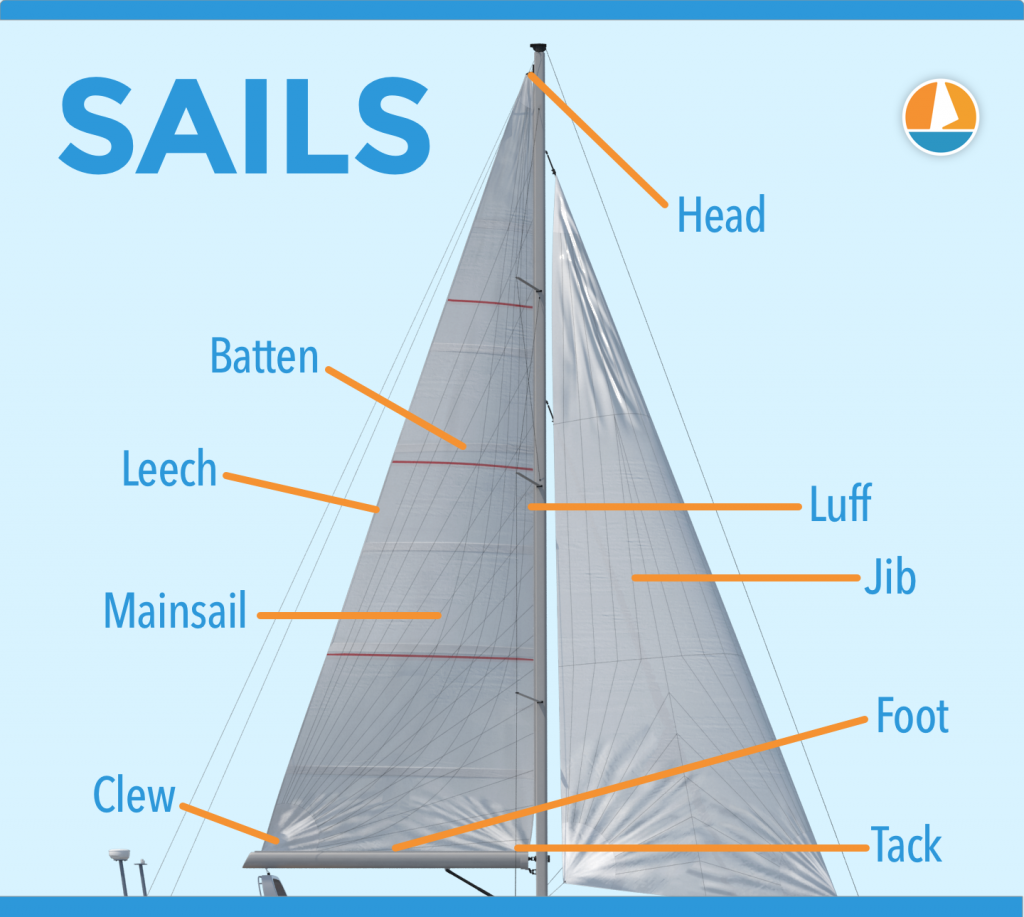
On this page:
Parts of a sail and their functions, mainsail components, jib components of a sailboat, components of spinnakers, sail controls and settings, sail care and maintenance, sail materials and construction.
In this guide, we'll focus on the three main types of sails : Mainsail, Jib, and Spinnaker.
Mainsail is the primary sail on your boat
The mainsail is the largest sail on a sailboat and is typically attached to the mast and boom. It is found aft (rear) of the mast. It's attached to the boat through a track or sail slide, which allows it to move up and down.
Jib is a triangular sail placed in front of the boat
The jib is a smaller sail that is attached to the bow of the boat and works in conjunction with the mainsail to control the direction and speed of the boat. It helps to improve the boat's handling and increase speed, working in tandem with the mainsail.
In some cases, larger jibs called genoas are used to capture more wind, thus increasing the boat's speed.
Spinnaker is designed for sailing downwind
The spinnaker is a large, colorful, and lightweight balloon-shaped sail designed for sailing downwind. It captures the wind from the rear, pushing the boat forward with added speed and stability.
In this section, you'll find a comprehensive explanation of the primary components of a sail and their functions:
Head is the uppermost corner of a sail
The head of the sail refers to the uppermost corner where it connects to the top of the mast. Knowing the location of the head is essential, as it helps you identify the top of the sail and allows you to properly hoist and secure it in place.
Tack is the lower front corner of a sail
The tack is where the lower front corner connects to the base of the mast, or the boom. This important point helps you determine the sail's orientation and affects its overall shape and efficiency. By adjusting the tension at the tack, you can control your sail's performance and handling in various wind conditions.
Clew is the lower rear corner of a saisl
The clew is where the sheets attach to control the sail's angle to the wind. Adjusting the tension on the sheets can change the sail's shape and ultimately influence the boat's speed and direction. Becoming familiar with the clew will help improve your sailing skills and ensure smooth maneuvers on the water.
Luff is the front edge of the sail
The luff is the forward edge of the sail that runs along the mast. It's crucial to maintaining a tight and efficient sail shape. When sailing upwind, pay close attention to the luff, as it can provide valuable information about your sail's trim. A properly trimmed sail will have a smooth luff, allowing the boat to move efficiently against the wind.
Leech is the rear edge of the sail
The leech is opposite the luff. It plays a critical role in controlling the overall shape and efficiency of your sail. Watch the leech carefully while sailing, as excessive tension or looseness can negatively affect your sail's performance. Adjusting your sail's trim or using a device called a "boom vang" can help control the shape and tension of the leech.
Foot is the bottom edge of the sail
The foot is running between the tack and the clew. It helps control the shape and power of the sail by adjusting the tension along the boom. Ensure the foot is properly trimmed, as this can impact your boat's performance and speed. A well-adjusted foot helps your sail maintain its proper shape and operate at optimal efficiency while out on the water.
In this section, we'll look at some critical elements of the jib: the sheet, genoa, and headstay.
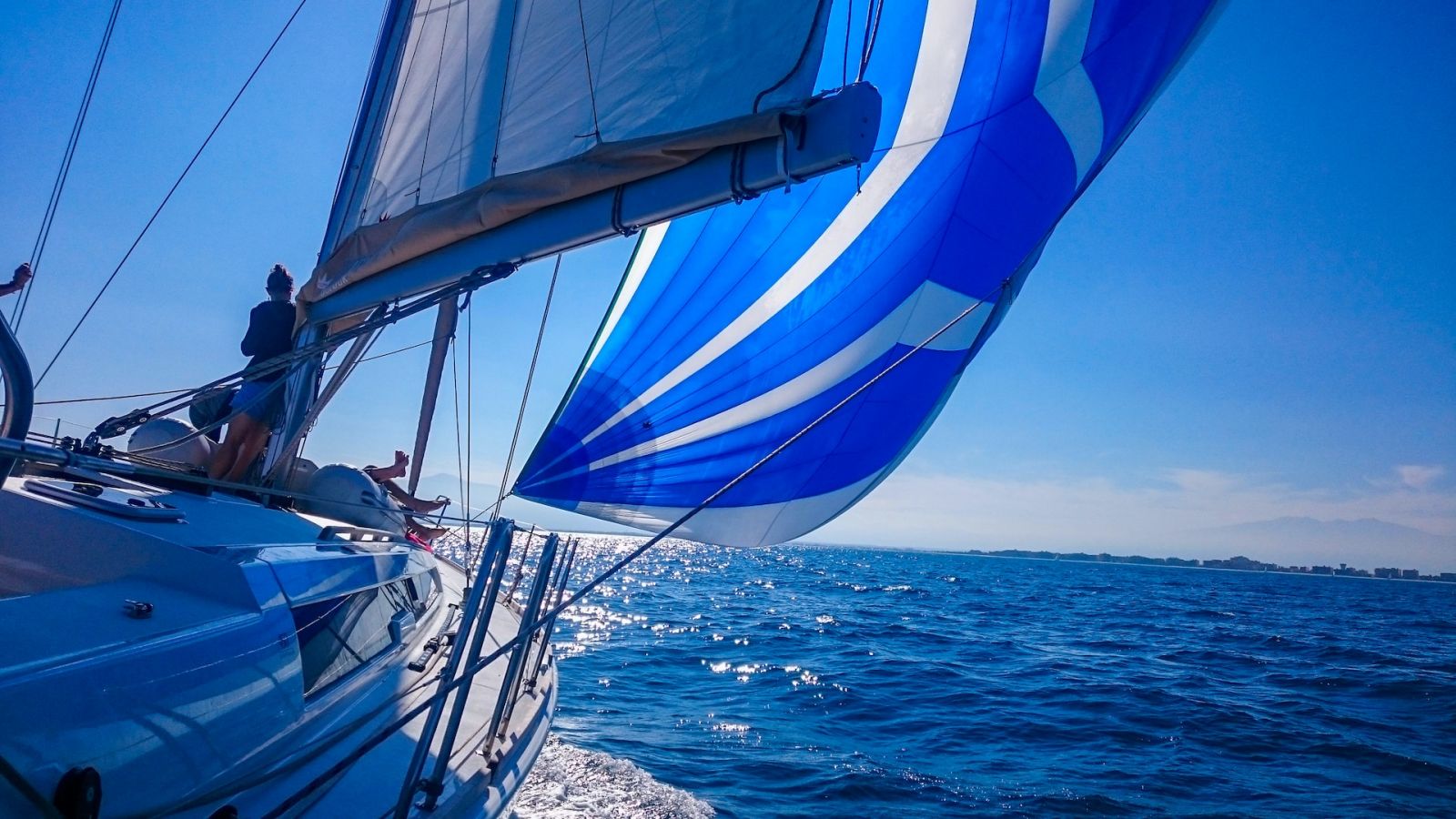
Sheet is the line used to control the position and trim of the sail
The jib sheet is the line used to control the jib's angle in relation to the wind. You adjust the sheet to get the best possible sail trim, which greatly affects your boat's performance. The jib sheet typically runs from the jib's clew (the lower rear corner of the sail) through a block on the boat's deck, and back to the cockpit, where you can easily control it.
When adjusting the jib sheet, you want to find the perfect balance between letting the sail out too far, causing it to luff (flutter), and pulling it in too tightly, which can cause heeling or poor sail shape. Make small adjustments and observe how your boat responds to find the sweet spot.
Genoa is a larger jib used to capture more wind
A genoa is a larger version of a standard jib. It overlaps the mainsail, extending further aft, and provides a greater sail area for improved upwind performance. Genoas are categorized by the percentage of overlap with the mainsail. For example, a 130% genoa means that the sail's area is 30% larger than the area of a jib that would end at the mast.
Genoas are useful in light wind conditions, as their larger surface area helps your boat move faster. However, they can become difficult to manage in strong winds. You might need to reef (reduce the size) or swap to a smaller jib to maintain control.
Headstay provides a support structure for the jib
The headstay is a crucial part of your boat's standing rigging system. It is the cable or rod that connects the top of the mast (the masthead) to the bow of the boat. The headstay helps maintain the mast's stability and provides a support structure for the jib.
The tension in your headstay plays a significant role in the jib's sail shape. Proper headstay tension will create a smooth, even curve, allowing your jib to perform optimally. If the headstay is too tight, the sail may be too flat, reducing its power, whereas a loose headstay can result in a sagging, inefficient sail shape.
A spinnaker is a sail designed specifically for sailing off the wind , on courses between a reach and downwind. They are made of lightweight fabric, often brightly colored, and help maximize your sailing speed and performance.
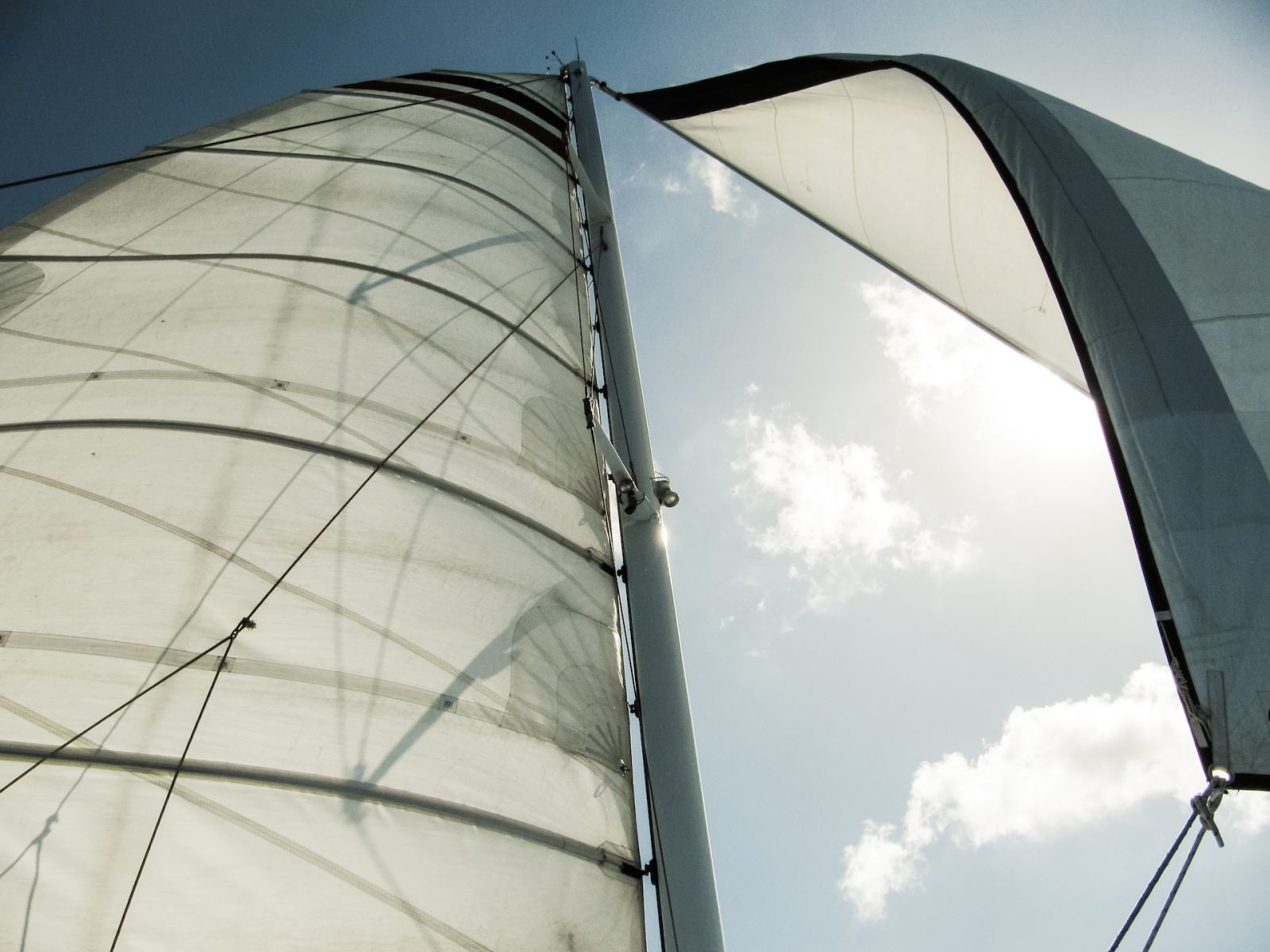
Asymmetrical spinnakers are designed for off-wind sailing
Asymmetrical spinnakers are usually found on modern cruising and racing boats. They're designed for a broader range of wind angles and have a more forgiving shape, making them easier for you to handle. Key components of an asymmetrical spinnaker include:
- Tack : This is the front, lower corner where the sail connects to the boat. A tack line is used to adjust the sail's position relative to the bow.
- Head : The top corner of the sail, where it connects to the halyard to be hoisted up the mast.
- Clew : The aft corner of the sail, connected to the sheet, allowing you to control the angle of the sail to catch the wind effectively.
You can find a step-by-step guide on how to rig and hoist an asymmetrical spinnaker here .
Symmetrical spinnakers are used for downwind sailing
Symmetrical spinnakers are more traditional and usually found on racing boats, where downwind performance is critical. These sails are shaped like a large parachute and are split into two identical halves. Key components of a symmetrical spinnaker include:
- Head : Similar to the asymmetrical spinnaker, the head is the top corner connected to the halyard.
- Clews : Unlike an asymmetrical spinnaker, a symmetrical spinnaker has two clews. Both are connected to sheets and guys, which help control the sail's shape and movement.
- Spinnaker Pole : This is a horizontal pole that extends from the mast and is used to project the windward clew outwards and hold the sail open.
Handling a symmetrical spinnaker can be more challenging, as it requires precise teamwork and coordination. If you're new to sailing with this type of sail, don't hesitate to seek guidance from experienced sailors to improve your technique.
In this section, we'll explore sail controls and settings, which are essential for beginners to understand for efficient sailing. We'll discuss trimming, and reefing, as sub-sections.
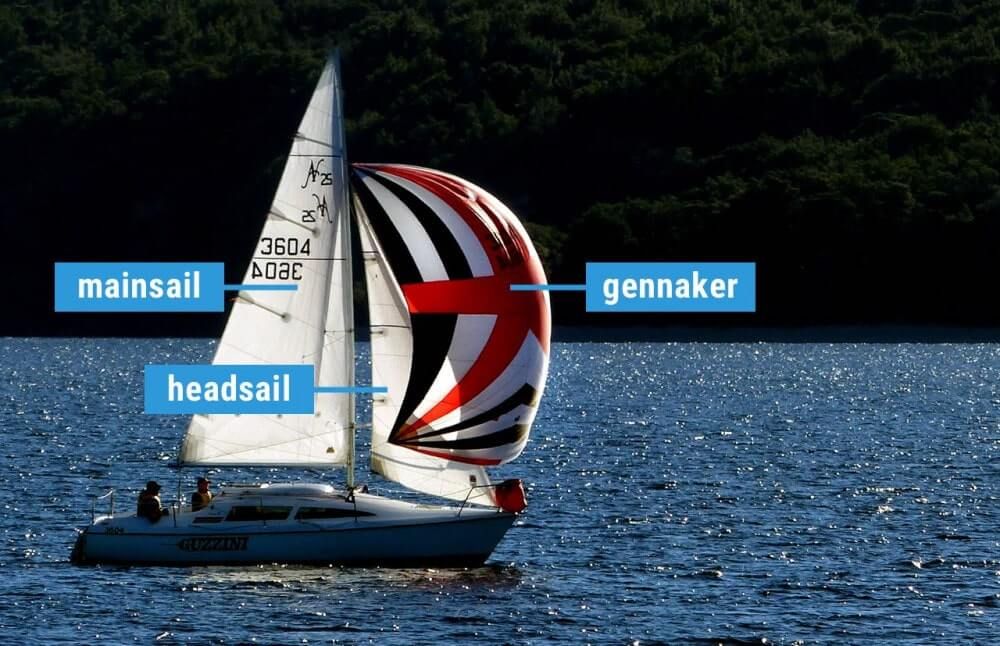
Trimming your sails for speed and stability
Trimming is the process of adjusting your sails to optimize them for the current wind conditions and desired direction. Proper sail trim is crucial for maximizing your boat's speed and stability. Here are some basic tips for sail trimming:
- Pay attention to the telltales, which are small ribbons or yarn attached to the sails. They help you understand the airflow over your sails and indicate whether they're properly trimmed.
- Use the sheets, which are lines attached to the clew of your sails, to adjust the angle of your sails relative to the wind.
- In light winds, ease the sails slightly to create a more rounded shape for better lift. In stronger winds, flatten the sails to reduce drag and prevent excessive heeling.
Reefing your sails for control and balance
Reefing is the process of reducing the sail area to help maintain control and balance in stronger wind conditions. It's an essential skill to learn for your safety and the longevity of your sails. Follow these steps to reef your sails:
- Head into the wind to reduce pressure on the sails.
- Lower the halyard (the line that raises the sail) until the sail reaches the desired reefing point.
- Attach the sail's reefing cringle (reinforced eyelet) to the reefing hook or tack line.
- Tighten the new, lower clew (bottom corner) of the sail to the boom with the reef line.
- Raise the halyard back up to tension the reduced sail.
Take proper care of your sailboat to ensure that it remains in top condition. In this section, we will discuss the key aspects of sail care and maintenance, focusing on cleaning and storage.
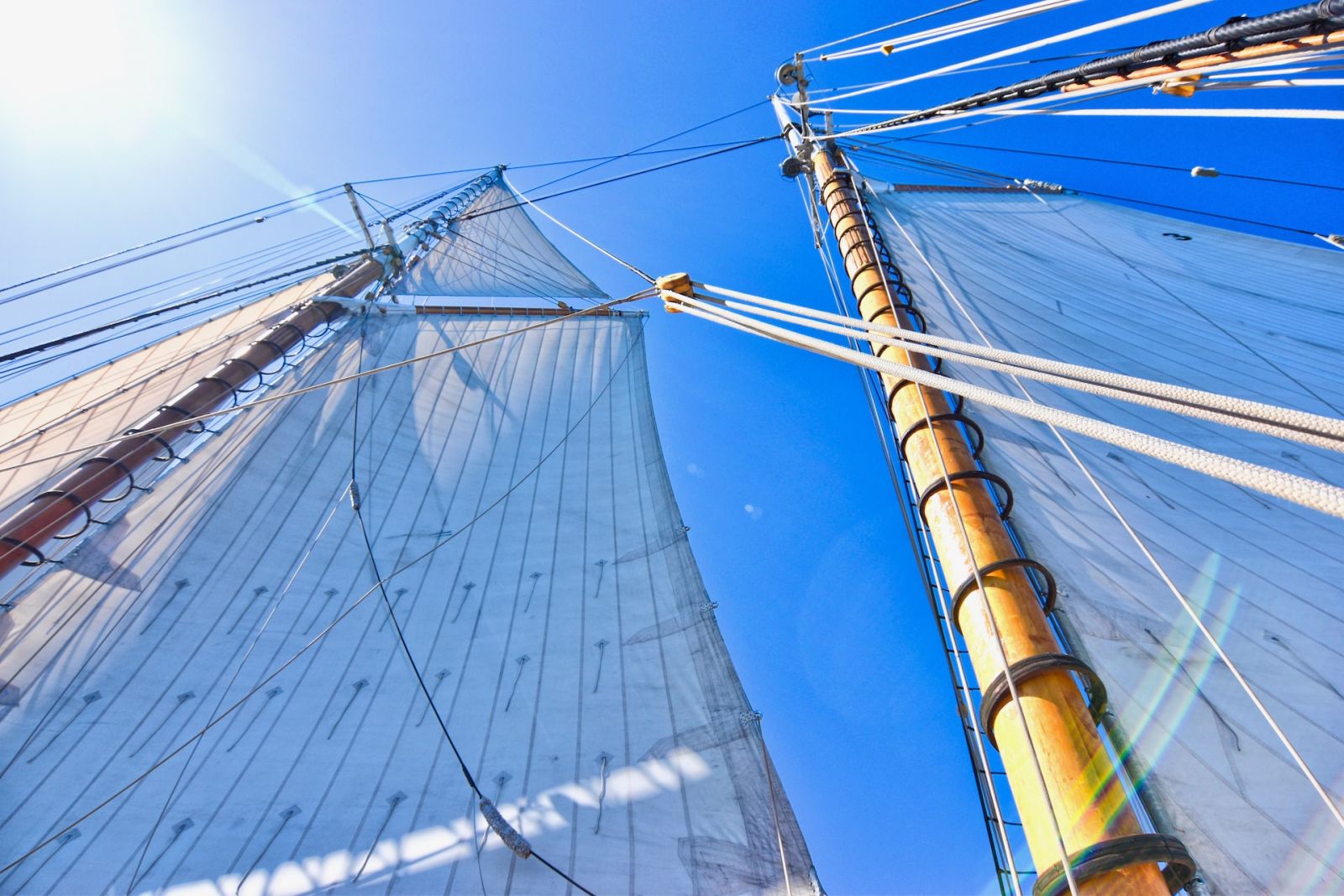
Steps to clean your sails
Keeping your sail clean is crucial for its longevity and performance. Follow these simple steps to maintain a spotless sail:
- Rinse with fresh water after each use, paying extra attention to areas affected by saltwater, debris, and bird droppings.
- Use a soft-bristled brush and a mild detergent to gently scrub away dirt and stains. Avoid harsh chemicals or abrasive materials, as they may damage the fabric.
- Rinse again thoroughly, ensuring all soap is washed away.
- Spread your sail out to air-dry, avoiding direct sunlight, which may harm the fabric's UV protection.
Ways to store your sails
Sail storage is equally important for preserving the lifespan of your sail. Here are some tips for proper sail storage:
- Fold or roll your sail : Avoid stuffing or crumpling your sail; instead, gently fold or roll it to minimize creases and wear on the fabric.
- Protect from UV rays : UV exposure can significantly reduce the life of your sail. Store it in a cool, shaded area or use a UV-resistant sail cover when not in use.
- Ventilation : Ensure your sail is stored in a well-ventilated area to prevent mildew and stale odors.
- Lay flat or hang : If space allows, store your sail laid out flat or hanging vertically to reduce the risk of creasing and fabric damage.
Flaking your sails when not in use
Flaking is the process of neatly folding your sails when they're not in use, either on the boom or deck. This helps protect your sails from damage and prolongs their lifespan. Here's how to flake your sails:
- Lower the sail slowly, using the halyard while keeping some tension on it.
- As the sail comes down, gather and fold the sail material in an accordion-like pattern on top of the boom or deck.
- Secure the flaked sail with sail ties or a sail cover to prevent it from coming undone.
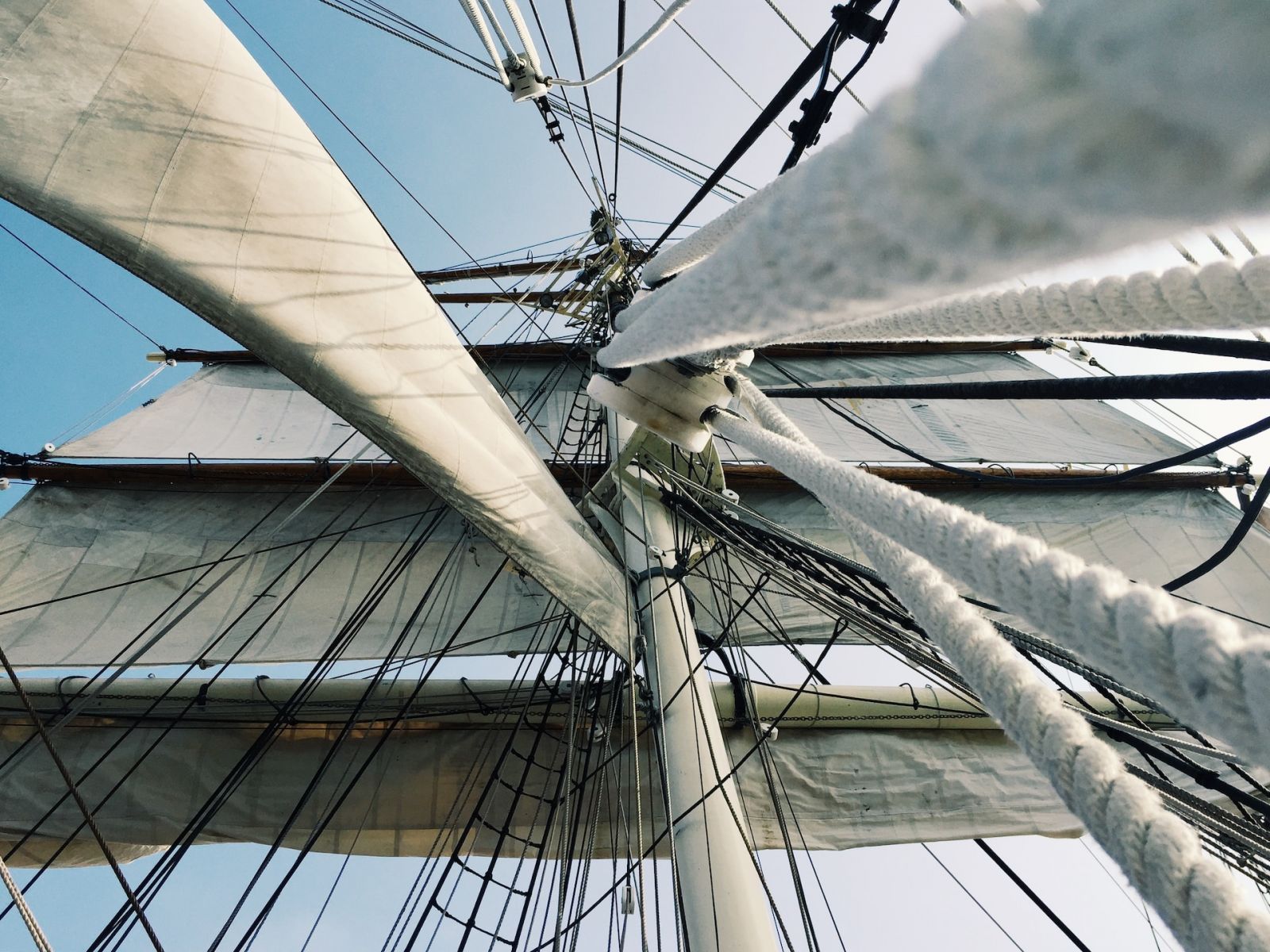
Traditional fabrics used to make sails
In the early days of sailing, natural materials like cotton and flax were used to make sails. These fabrics were durable, breathable, and held up well in various weather conditions. However, they would eventually wear out and lose their shape due to the constant exposure to UV rays and seawater.
While traditional fabrics like cotton and flax were once commonly used for sailmaking, they have largely been replaced by synthetic materials like polyester and nylon due to their superior strength, durability, and resistance to mildew and rot. However, some sailors and sailmakers still use cotton and other natural fibers for certain applications, such as traditional sailmaking or historical recreations.
Modern fabrics used to make sails
Modern sail materials, such as Dacron, Mylar, and laminates, are more resilient and longer-lasting than traditional fabrics. These materials are lightweight, strong, and resistant to UV rays and water damage.
Dacron : Dacron is a popular material for sails because of its durability, UV resistance, and ease of maintenance. It's a type of polyester fabric that is often used for making cruising sails. Dacron offers excellent shape retention and resistance to stretch, making it ideal for both beginners and experienced sailors.
Laminate materials : Laminate sails are made by bonding multiple layers of materials like Mylar, polyester, and Kevlar. These sails offer better shape and performance compared to their fabric counterparts, making them popular among racers. However, they tend to be more delicate and may not be suitable for long-term cruising.
Mylar films : Mylar films are used in laminate sails for their excellent strength-to-weight ratio and shape retention. These films are often sandwiched between other materials, such as polyester or Kevlar, to enhance the sail's resistance to stretch and load handling. However, Mylar sails can be susceptible to delamination and abrasion, requiring extra care and regular inspection.
Sail stitching for shape and durability
Sail stitching is an essential aspect of sail construction, helping to maintain the sail's shape and durability. Various stitching techniques can be used, such as zigzag, straight, and triple-step sewing. The choice of stitching type depends on the sail's purpose and expected loads. In addition, using UV-resistant thread ensures that the stitching lasts longer under harsh sun exposure.
Leave a comment
You may also like, how do sails actually work: full beginners guide.
The sails are your boat's primary driving force. Your boat is designed to sail , and with good wind it will be faster and more comfortable than using the engine. …
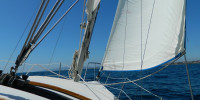
Sail Names: Explained for Beginners (With 15 Examples)
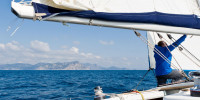
How To Trim Sails: The Ultimate Guide (with Cheat Sheet)
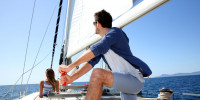
How To Reef Your Sails (Mainsail, Jib, Furling, Loose)
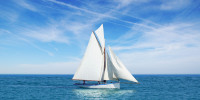
How Much Do New Sails Cost?
Own your first boat within a year on any budget.
A sailboat doesn't have to be expensive if you know what you're doing. If you want to learn how to make your sailing dream reality within a year, leave your email and I'll send you free updates . I don't like spam - I will only send helpful content.
Ready to Own Your First Boat?
Just tell us the best email address to send your tips to:
No products in the cart.
Sailing Ellidah is supported by our readers. Buying through our links may earn us an affiliate commission at no extra cost to you.
The Running Rigging On A Sailboat Explained
The running rigging on a sailboat consists of all the lines used to hoist, lower, and control the sails and sailing equipment. These lines usually have different colors and patterns to easily identify their function and location on the vessel.
Looking at the spaghetti of lines with different colors and patterns might get your head spinning. But don’t worry, it is actually pretty simple. Each line on a sailboat has a function, and you’ll often find labels describing them in the cockpit and on the mast.
In this guide, I’ll walk you through the functions of every component of the running rigging. We’ll also look at the hardware we use to operate it and get up to speed on some of the terminology.
The difference between standing rigging and running rigging
Sometimes things can get confusing as some of our nautical terms are used for multiple items depending on the context. Let me clarify just briefly:
The rig or rigging on a sailboat is a common term for two parts, the standing , and the running rigging.
- The standing rigging consists of wires supporting the mast on a sailboat and reinforcing the spars from the force of the sails when sailing. Check out my guide on standing rigging here!
- The running rigging consists of the halyards, sheets, and lines we use to hoist, lower, operate and control the sails on a sailboat which we will explore in this guide.
The components of the running rigging
Knowing the running rigging is an essential part of sailing, whether you are sailing a cruising boat or crewing on a large yacht. Different types of sailing vessels have different amounts of running rigging.
For example, a sloop rig has fewer lines than a ketch, which has multiple masts and requires a separate halyard, outhaul, and sheet for its mizzen sail. Similarly, a cutter rig needs another halyard and extra sheets for its additional headsail.
You can dive deeper and read more about Sloop rigs, Ketch Rigs, Cutter rigs, and many others here .
Take a look at this sailboat rigging diagram:
Lines are a type of rope with a smooth surface that works well on winches found on sailboats. They come in various styles and sizes and have different stretch capabilities.
Dyneema and other synthetic fibers have ultra-high tensile strength and low stretch. These high-performance lines last a long time, and I highly recommend them as a cruiser using them for my halyards.
A halyard is a line used to raise and lower the sail. It runs from the head of the sail to the masthead through a block and continues down to the deck. Running the halyard back to the cockpit is common, but many prefer to leave it on the mast.
Fun fact: Old traditional sailboats sometimes used a stainless steel wire attached to the head of the sail instead of a line!
Jib, Genoa, and Staysail Halyards
The halyard for the headsail is run through a block in front of the masthead. If your boat has a staysail, it needs a separate halyard. These lines are primarily untouched on vessels with a furling system except when you pack the sail away or back up. Commonly referred to as the jib halyard.
Spinnaker Halyard
A spinnaker halyard is basically the same as the main halyard but used to hoist and lower the spinnaker, gennaker, or parasailor.
The spinnaker halyard is also excellent for climbing up the front of the mast, hoisting the dinghy on deck, lifting the outboard, and many other things.
A sheet is a line you use to control and trim a sail to the angle of the wind . The mainsheet controls the angle of the mainsail and is attached between the boom and the mainsheet traveler . The two headsail sheets are connected to the sail’s clew (lower aft corner) and run back to each side of the cockpit.
These are control lines used to adjust the angle and tension of the sail. It is also the line used to unfurl a headsail on a furling system. Depending on what sail you are referring to, this can be the Genoa sheet , the Jib sheet , the Gennaker sheet , etc.
The outhaul is a line attached to the clew of the mainsail and used to adjust the foot tension. It works runs from the mainsail clew to the end of the boom and back to the mast. In many cases, back to the cockpit. On a boat with in-mast furling , this is the line you use to pull the sail out of the mast.
Topping lift
The topping lift is a line attached to the boom’s end and runs through the masthead and down to the deck or cockpit. It lifts and holds the boom and functions well as a spare main halyard. Some types of sailboat rigging don’t use a topping lift for their boom but a boom vang instead. Others have both!
Topping lifts can also be used to lift other spars.
A downhaul is a line used to lower with and typically used to haul the mainsail down when reefing and lowering the spinnaker and whisker poles. The downhaul can also control the tack of an asymmetrical spinnaker, gennaker, or parasailor.
Tweaker and Barber Haul
A tweaker is a line, often elastic, attached to the sheet of a headsail and used to fine-tune the tension on the sheet.
Barber haul
A barber haul is a line attached to a headsail’s sheet to adjust the sheeting angle to the wind. It is often used to pull the clew further toward the center or outboard than the cars allow.
Boom Preventer
A boom preventer is a line attached to the boom’s end when sailing off the wind. Its function is to hold the spar in place and prevent it from swinging wildly.
If the boat were to get an accidental gybe, it could cause serious damage to the rigging or even harm people on board. It is important for the rigger to be cautious when setting up the boom preventer.
Running Backstay
Running backstays is similar to a normal backstay but uses a line instead of a hydraulic tensioner. Some rigs have additional check stays or runners as well.
Bonus tip: Reefing
The term reefing is used when reducing the effective sailing area exposed to the wind of a given sail. Headsails are usually reefed by partially furling them in, and they often have marks for what we refer to as 1st, 2nd, and 3rd reefs.
The mainsail is reefed similarly with an in-mast furling or in-boom furling system.
On a traditional mast, we use a system called slab reefing. The system has reefing lines running through the boom to reinforced points on the luff and leech, allowing you to pull the sail down to the boom and effectively reduce the sail area.
Having at least two reefing points in the mainsail is normal, but most cruising sailboats have 3. The 3rd is used for the heaviest conditions, giving you only a tiny bit of sail area exposed to the wind.
You want to reef your sails before the wind increases to a point where your boat gets overpowered.
It is essential to practice your reefing technique . You will find yourself in situations with rapidly increasing winds where you need to reduce your sails quickly.
Rule of thumb: If you think setting a reef might be a good idea, do it.
Shaking a reef is the term used when we sail with a reefed sail and want to increase the sail area back to full.
Hardware used for sail handling and the running rigging
Furling system.
Most sailboats have their headsail on a furling system. A furling system is a tube that runs along the forestay from the bottom furler drum to the masthead swivel.
This system allows you to roll the headsail around the forestay, making furling the sail in and out accessible. It is also convenient when reefing the sail when the wind picks up, as you can easily do this from the safety of the cockpit. These furling systems come in manual versions and electric versions.
In-mast furling
In-mast furling is a system that rolls the mainsail in and out of the mast. To unfurl the mainsail, we use the outhaul .
In-boom furling
In-boom furling is a system that rolls the mainsail in and out of the boom. This system has been costly and has mostly been seen on big yachts earlier. They are becoming more affordable and common on smaller boats, though. To unfurl this setup, we use the main halyard.
A Stack pack is also called a Lazy Bag or Lazy Pack. It is a bag with a zip attached to the boom where the mainsail is stored when unused. It protects the mainsail from UV rays from the sun and weather elements. It is a very nice and tidy way to store the mainsail and reefing lines if you don’t have in-mast or in-boom furling.
Lazy Jacks is a system of lines running from the stack pack to the mast. The Lazy Jacks guide the mainsail up and down from the Stack Pack and prevent it from falling down on the deck. It is also possible to rig Lazy Jacks without a Stack Pack.
A block is a pulley with a sheave wheel. Blocks are used to change the direction of a pull on a line or rope and give a mechanical advantage. They have many uses, especially onboard sailboats.
A winch is a metal drum that gives you a mechanical advantage to control and tighten lines. These can be operated by turning a rope around it and pulling manually or by a winch handle to get more force. Most modern winches are self-tailing, which means they lock the line on so you can winch the line without holding on to it. Some boats even have electrical winches operated by a button.
Mainsheet Traveler
The mainsheet traveler is a horizontal track that the mainsheet is attached to through a series of blocks. The traveler enables you to adjust and lock the boom at an angle and also plays a critical part in trimming the mainsail.
Most cruising sailboats have their traveler attached to the top of the coachroof in front of the spray hood. A racing boat typically has the traveler in the cockpit near the helm to give the helmsman better control over the mainsheet.
The cars are basically a pulley or block attached to a track on the port and starboard deck that your headsail sheets run through. Cars are used to control the angle of the sheet between the clew and the deck. The cars are handy when you trim the sail to set the right balance of tension between the foot and leech, depending on your point of sail.
The jammer is used to lock a line in place. Most sailboats use these for locking the halyards, mainsheet, outhaul, reef lines, traveler lines, boom vang lines, etc. You can pull or winch a line through a closed jammer, but it won’t run away if you let go of it unless you open the lock.
As I explained earlier, it is normal to have most or all of the lines led back to the cockpit, and they are usually run through a series of jammers.
The jammers are often labeled with the name of the line it locks, which makes it easier to remember which line goes where.
Spinnaker Pole
A spinnaker pole is a spar used to wing out a headsail when sailing off the wind, particularly the spinnaker. The spinnaker pole should have the same length as the distance between the mast and the forestay measured along the deck. We use a fore and aft guy and the pole’s topping lift to rig a pole correctly.
The rigging varies depending on the layout of the boat, but it usually looks like this:
- One line runs from the bow to the end of the pole.
- An aft line runs from near the stern to the end of the pole.
- A topping lift is used to raise and lower the pole.
Whisker Pole
A whisker pole is similar to the spinnaker pole and is rigged similarly. It is typically built lighter and attached to a track on the mast. These can be found in fixed lengths or adjustable lengths. Ideally, the length should be the same as the foot of the headsail you intend to pole out.
Boom Vang/Rod Kicker
The Boom Vang has a few different names. Rod-kicker, kicking strap, or kicker. It is used to tension the boom downwards. When you are sailing downwind and have the boom far out, the mainsheet won’t pull the boom down as much as inboard, and you can then use the vang to adjust the twist and shape of the mainsail.
Mooring line
A mooring line is a traditional rope lead through a fairlead to the vessel’s cleat and a mooring buoy, key, or pontoon.
Final words
Congratulations! By now, you should have a much better understanding of how the running rig on a sailboat functions. We’ve covered the different lines, their purpose, and the hardware used to operate them. I hope you’ve enjoyed this guide and learned something new.
Now it’s time to take what you’ve learned and put it into practice by getting out on the water, setting sail, and getting hands-on experience with the lines.
Or you can continue to my following guide and learn more about the different types of sails .
Sharing is caring!
Skipper, Electrician and ROV Pilot
Robin is the founder and owner of Sailing Ellidah and has been living on his sailboat since 2019. He is currently on a journey to sail around the world and is passionate about writing his story and helpful content to inspire others who share his interest in sailing.
Leave a Reply Cancel reply
Your email address will not be published. Required fields are marked *

IMAGES
VIDEO
COMMENTS
The hull is what most people would consider 'the boat'. It's the part that provides buoyancy and carries everything else: sails, masts, rigging, and so on. Without the hull, there would be no boat. The hull can be divided into different parts: deck, keel, cabin, waterline, bilge, bow, stern, rudder, and many more.
Boat Identification Worksheet Activity: Use the Age of Exploration vocabulary to learn the parts of a ship. Complete the Boat Identification Worksheet. Identify Parts of a Ship Instructions for Students Materials: Pencil Boat Identification Worksheet Activity: Use the Age of Exploration vocabulary to learn the parts of a ship. Complete the Boat ...
Boat Identification Worksheet Learner Objectives: Use the Age of Exploration vocabulary to learn the parts of a ship. Procedure: Use vocabulary and worksheet to review ship identification. Author: Audrey-M Created Date: 12/5/2013 10:46:27 AM ...
A sailboat is a complex and intricate piece of machinery, with numerous parts and components working together to harness the power of the wind and propel the boat forward. To fully appreciate and understand the art of sailing, it is essential to familiarize yourself with the basic anatomy of a sailboat and the terminology used to describe its ...
written by SailZing Editor. Here's a fun activity for newer Optimist sailors. Use the worksheet to match the parts of the boat to the arrows in the drawing. This is a matching exercise - the worksheet lists the parts. Download the worksheet and answer key here. A more hands-on version of this activity is to make cards with the parts of the ...
About this Worksheet. This is a free printable worksheet in PDF format and holds a printable version of the quiz Parts of a sailboat. By printing out this quiz and taking it with pen and paper creates for a good variation to only playing it online.
Level: Grade 5 and grade 6. Language: English (en) ID: 1046403. 30/05/2021. Country code: CA. Country: Canada. School subject: Physical Education (PE) (1061719) Main content: Parts of the boats, sailing (1392071) Join the following words with arrows.
A basic sailboat is composed of at least 12 parts: the hull, the keel, the rudder, the mast, the mainsail, the boom, the kicking strap (boom vang), the topping lift, the jib, the spinnaker, the genoa, the backstay, and the forestay. Read all the way through for the definition of each sailboat part and to know how they work.
The Parts of a Sailboat Below the Waterline Keels & Rudders. This Gallant 53 has a long-fin keel and a spade rudder. Keels provide three key attributes in varying amounts depending on their design: directional stability, ballast, and lift to windward.
the area of the boat, usually recessed into the deck, from which the boat is steered and sailed. transom. the flat surface that closes the hull at the stern. bow. the forward part of the boat. stern. the aft (rear) part of the boat. rudder. movable appendage under the boat and with which the boat can be steered.
This online quiz is called Parts of a sailboat. It was created by member Kirill Milov and has 7 questions. ... There is a printable worksheet available for download here so you can take the quiz with pen and paper. Remaining . 0. Correct . 0. Wrong ...
The hull carries the passengers and supports the rigging. The rigging includes many parts of the sailboat, such as the lines ( sheets and halyards ), mainsail, headsail (jib), boom, and mast. The keel or centerboard is attached to the bottom of the hull and keeps the boat from sliding sideways through the water. The rudder is used to steer the ...
Short answer parts of sailboat: A sailboat consists of various essential components, including the hull, keel, rudder, mast, boom, sails, rigging, and cockpit. These parts work together to enable sailing and control the boat's movement and direction. Understanding the Key Parts of a Sailboat: A Comprehensive GuideUnderstanding the Key Parts of a Sailboat: A Comprehensive
Rigging. The rigging refers to the network of cables, wires, and lines that support and control the sails. This includes components such as shrouds, forestays, backstays, and halyards. Rigging plays a crucial role in maintaining the mast's stability, tensioning the sails, and controlling their position.
The part of the boat with which it is steered. Rudder. Steering device, usually a vertical blade attached to a post at, or near, the stern of the boat. Cockpit. The area of the boat from which the boat is steered or sailed. Cabin. A room in the interior of a boat. Standing Rigging.
Helmsman - The person that is piloting the boat and at the helm. Steering wheel - This is connected to the rudder via cables or pulleys and is used in place of a tiller to steer the boat. Hull - This is the entire body of the boat. Deck - This is the flat surface on the top of the boat. Keel - This is a fin connected to the bottom of ...
Short answer sailboat parts: Sailboat parts refer to the components and equipment that make up a sailboat. Common examples include the mast, boom, sails, rigging, winches, rudder, and keel. These parts are essential for navigation and control of the vessel while under sail. Understanding Sailboat Parts: A Comprehensive Guide Understanding Sailboat Parts: A Comprehensive Guide
Boom Vang - A device used for holding down the boom. Bow - The front part of a boat. Centerboard - A plate that pivots and is used to lessen leeway and balance the boat. Cleat - A fastening where lines are able to be secured. Halyard - The line that is used to raise a sail; the main halyard raises the main sail.
Parts of a Boat Bow. The bow of a boat is the frontmost part, also known as the "pointy end." It is designed to cut through the water and helps the boat move smoothly. The shape of the bow can vary depending on the type of boat. Some bows are sharp and pointed, while others are more rounded.
The headstay is a crucial part of your boat's standing rigging system. It is the cable or rod that connects the top of the mast (the masthead) to the bow of the boat. The headstay helps maintain the mast's stability and provides a support structure for the jib. The tension in your headstay plays a significant role in the jib's sail shape.
Download the Activity Sheet: https://www.rya.org.uk/SiteCollectionDocuments/OnBoard/BOAT%20PARTS%20CROSSWORD%20LEVEL%201.pdf#kidsactivity #lesson #learning #...
Entire Library Worksheets First Grade Reading & Writing Parts of a Boat Diagram. Worksheet Parts of a Boat Diagram. Ahoy matey! Learn about the different sight words that you'll find on a boat, with this fun paper diagram. Little learners can cut and paste the sight words in the correct spot on this picture of a boat.
By Robin Iversen January 12, 2024. The running rigging on a sailboat consists of all the lines used to hoist, lower, and control the sails and sailing equipment. These lines usually have different colors and patterns to easily identify their function and location on the vessel. Looking at the spaghetti of lines with different colors and ...